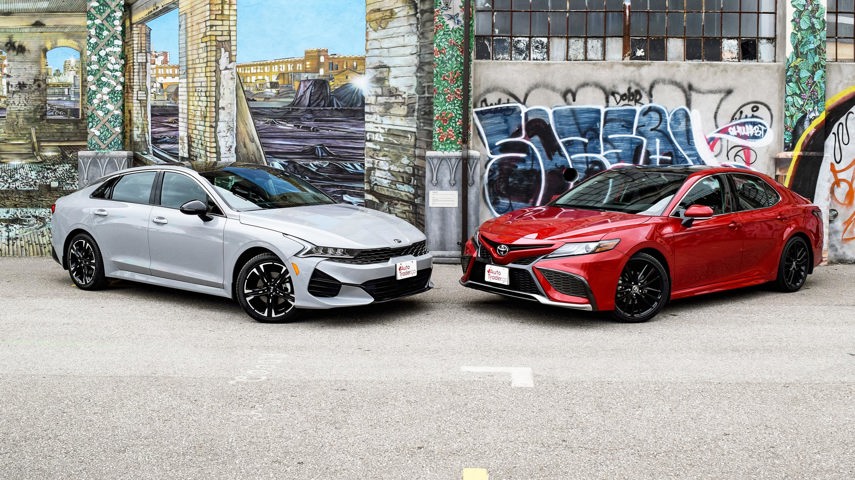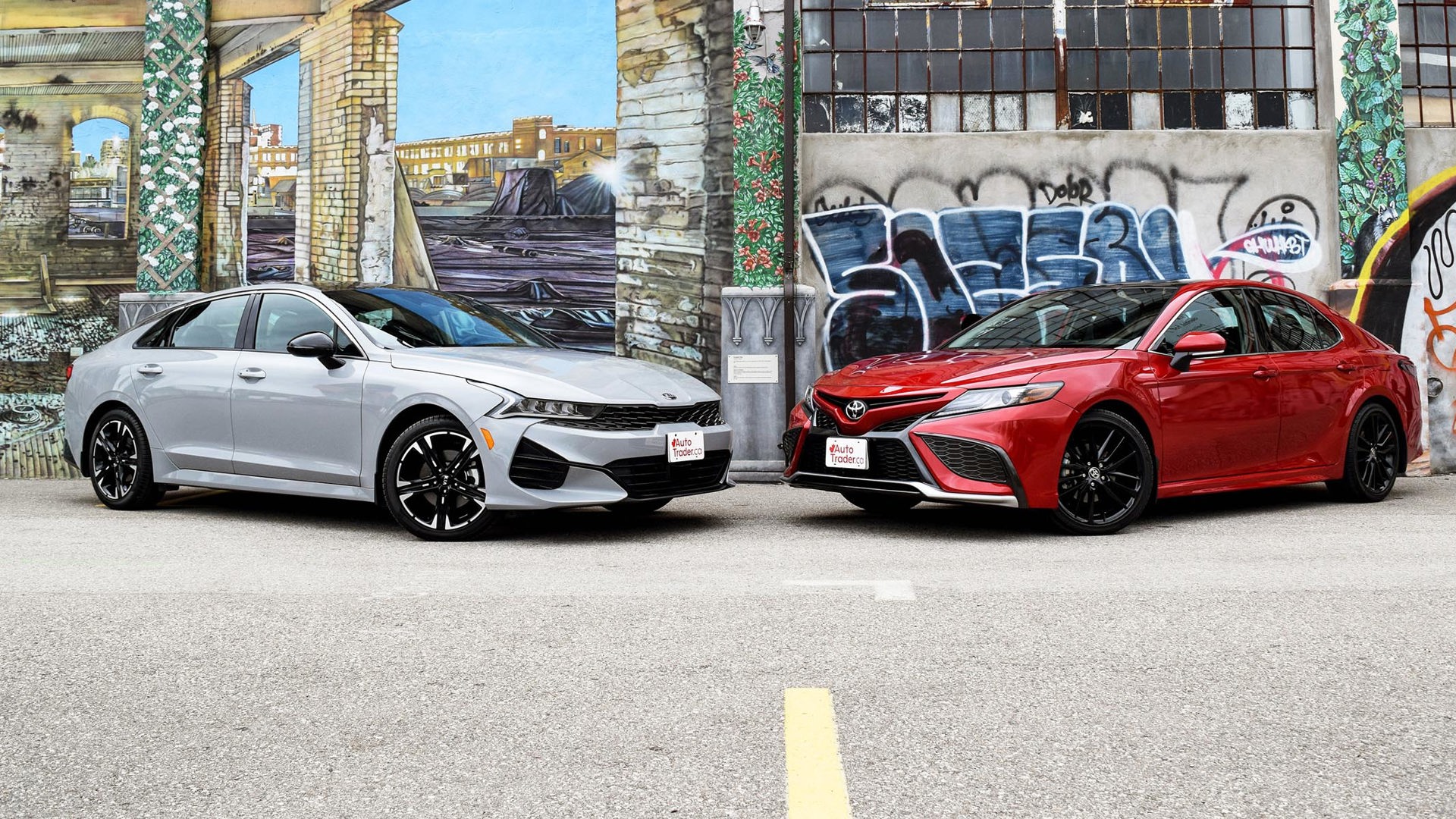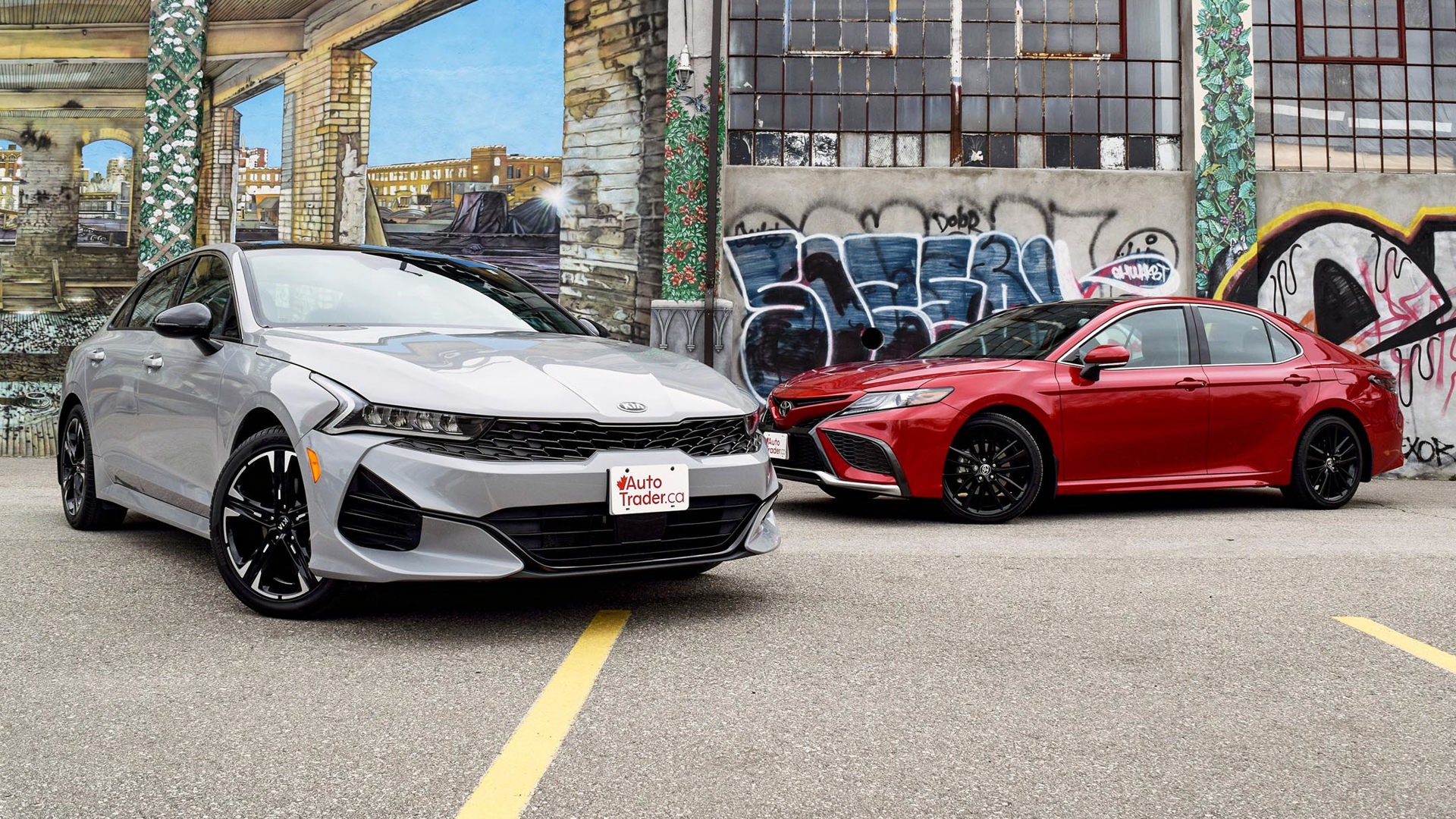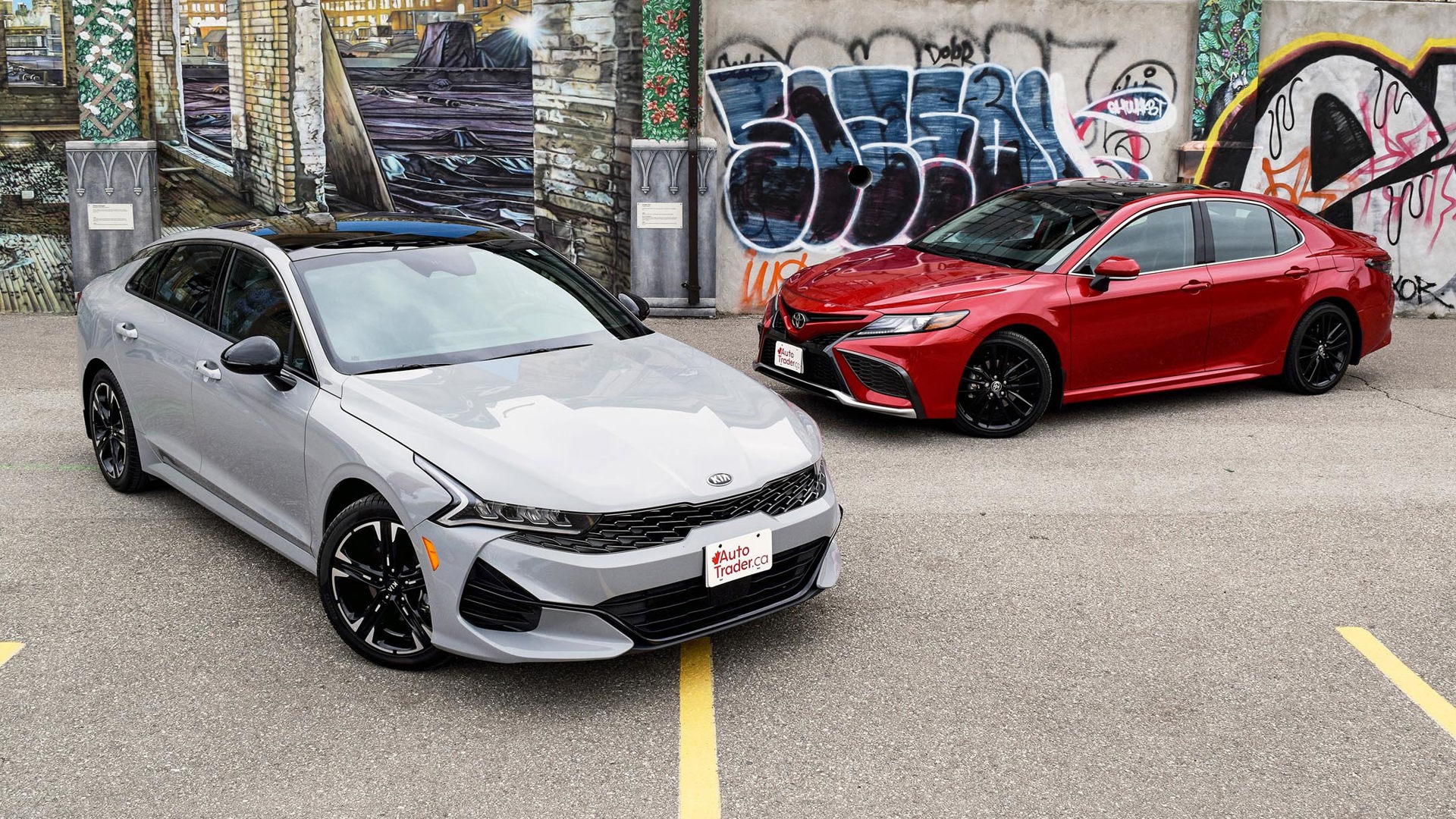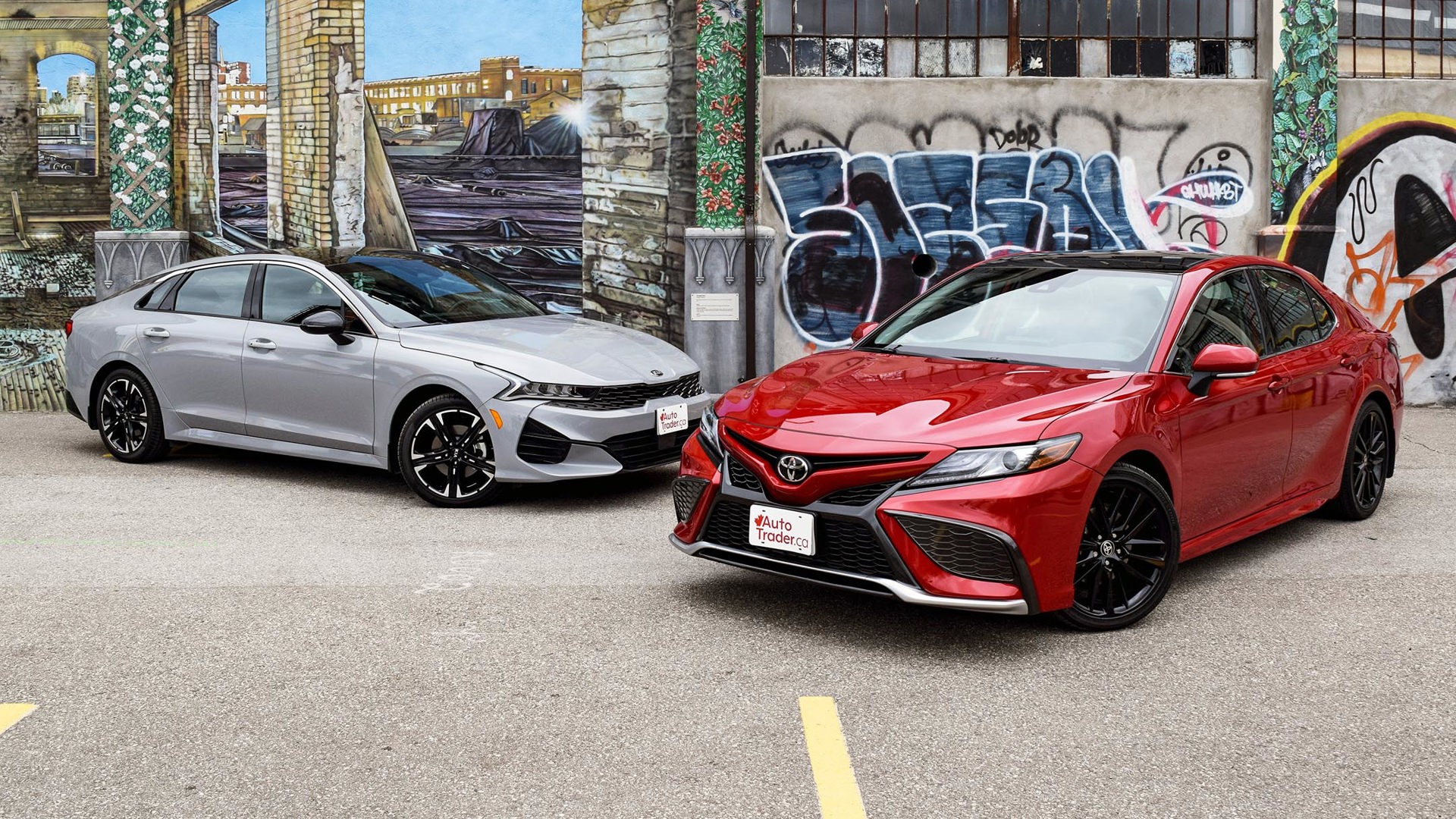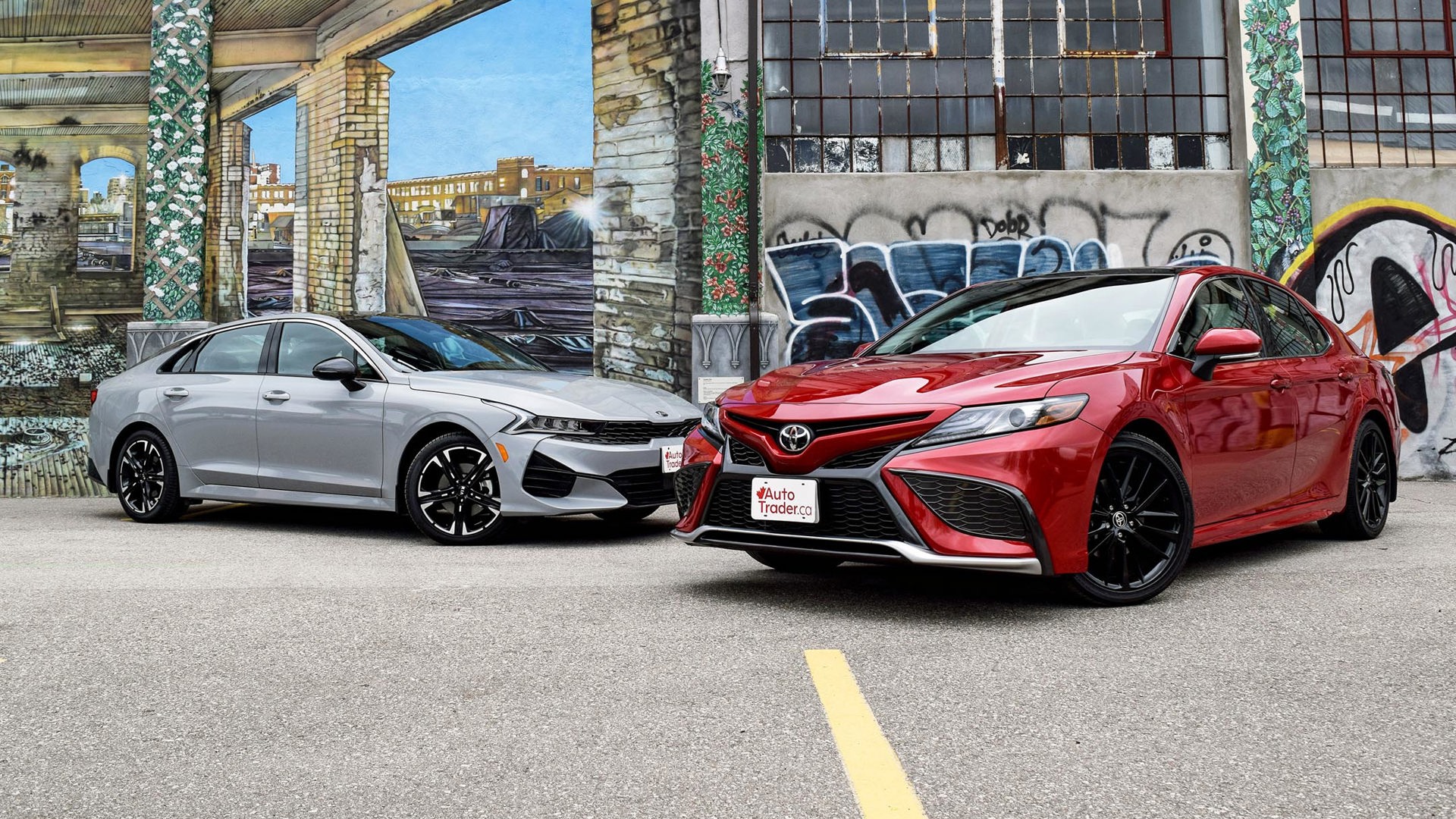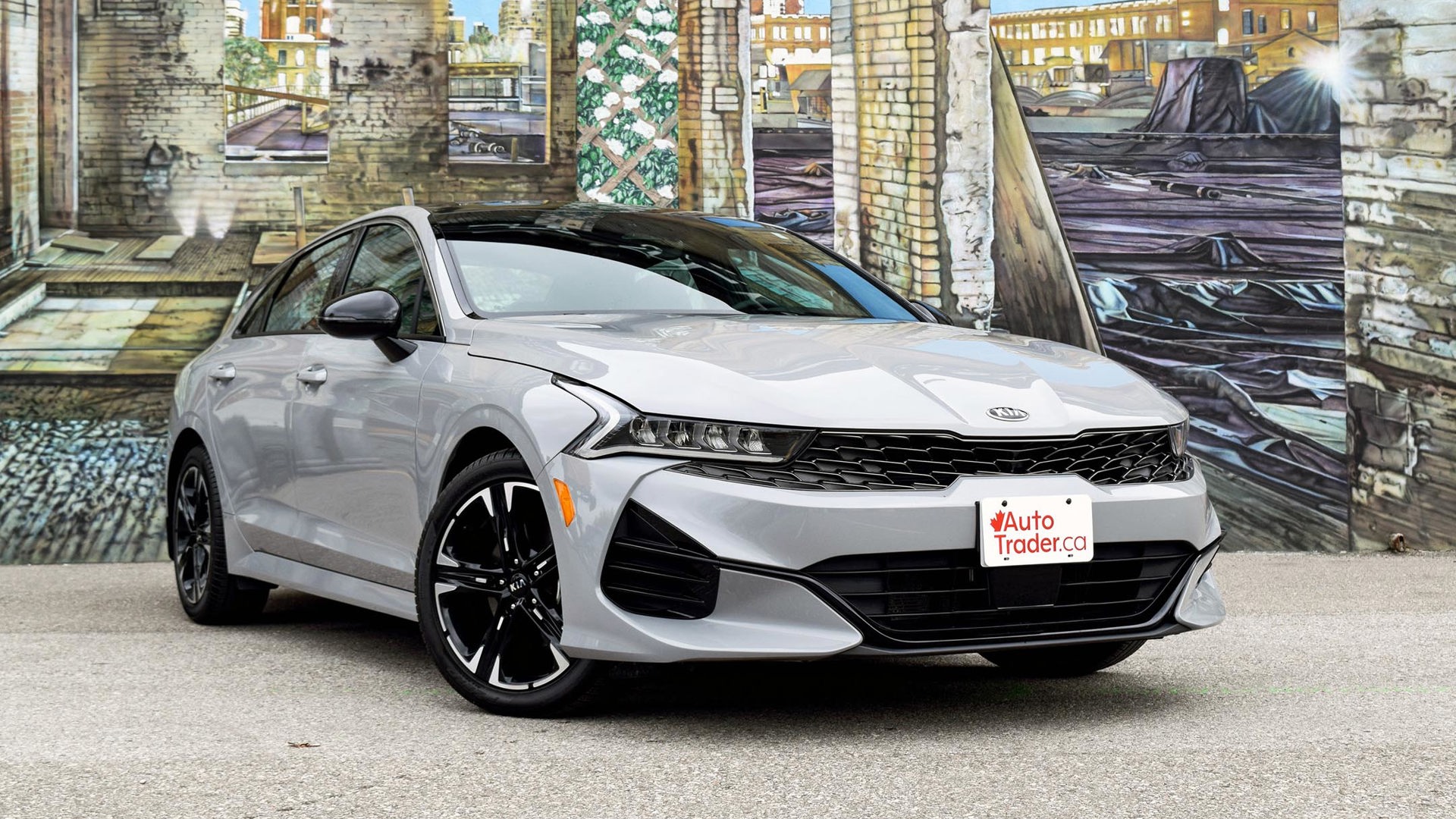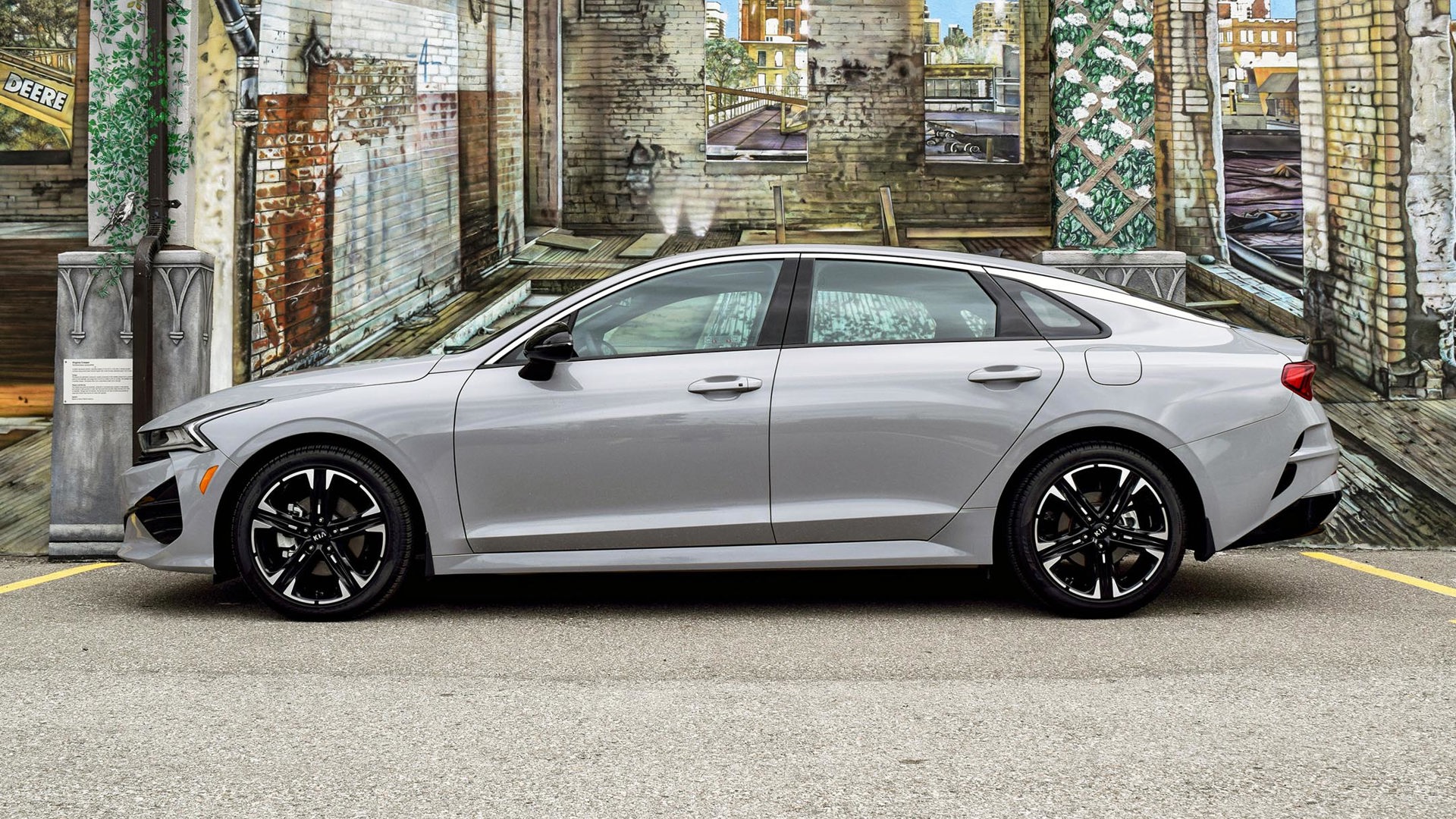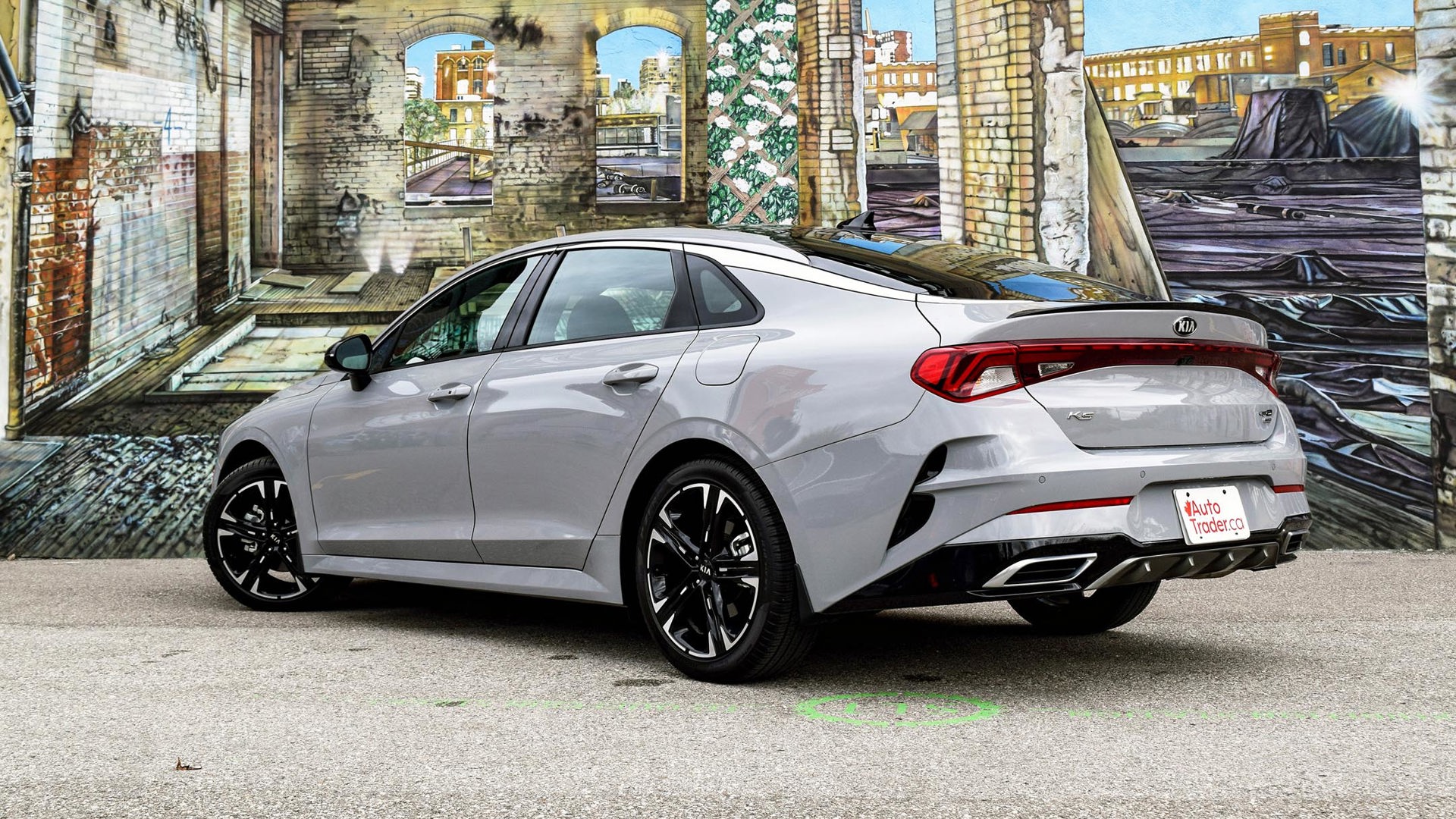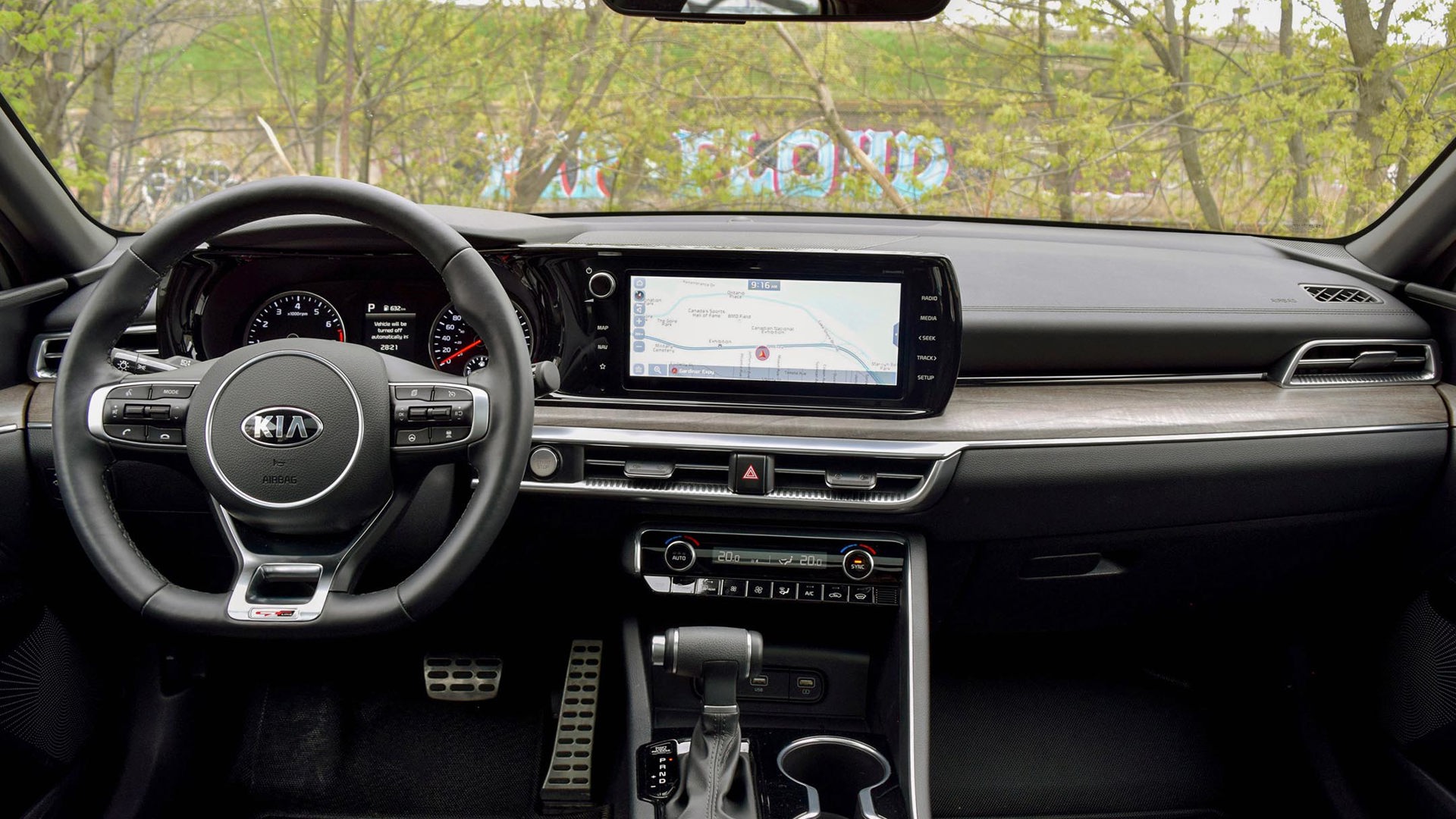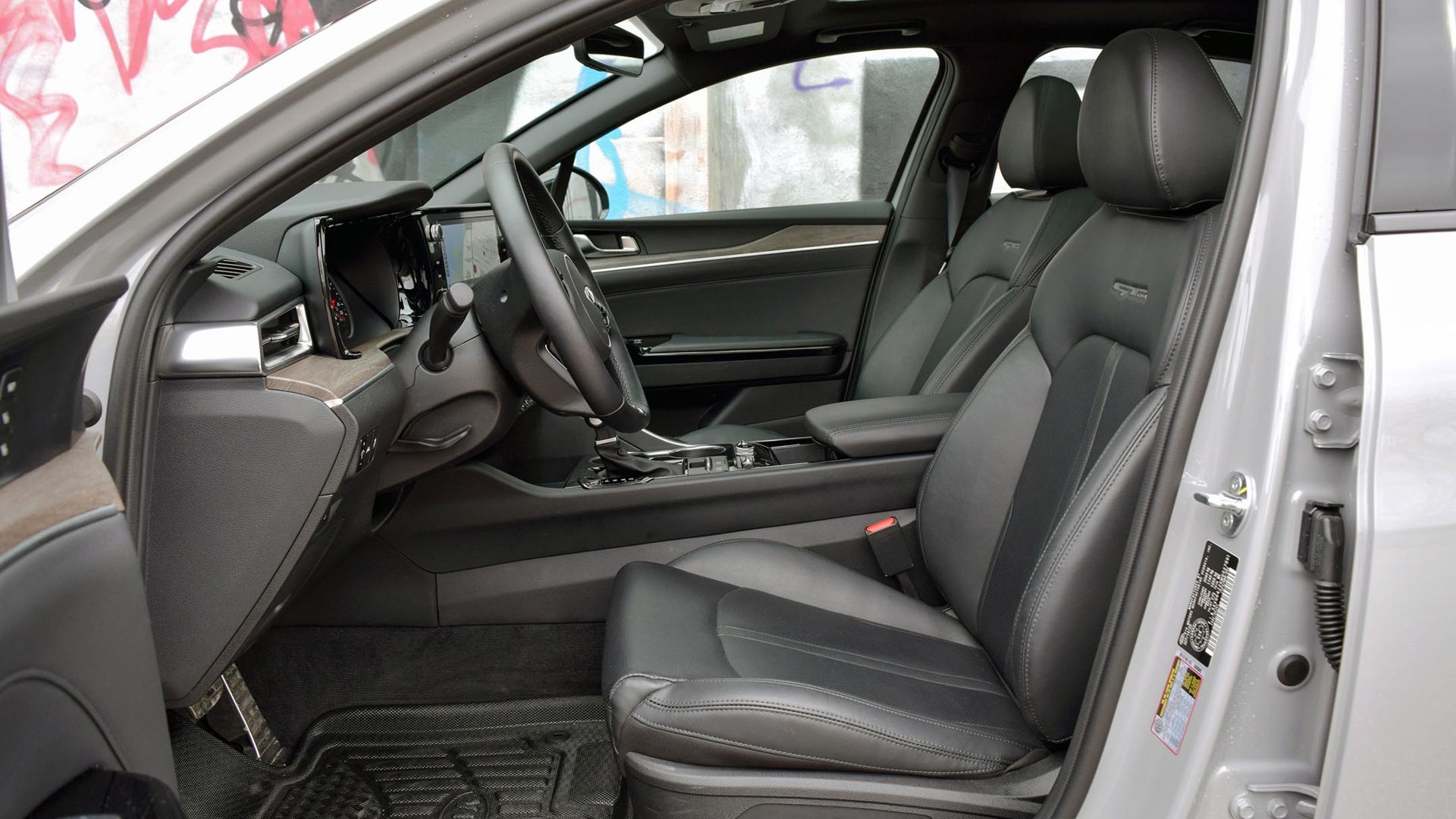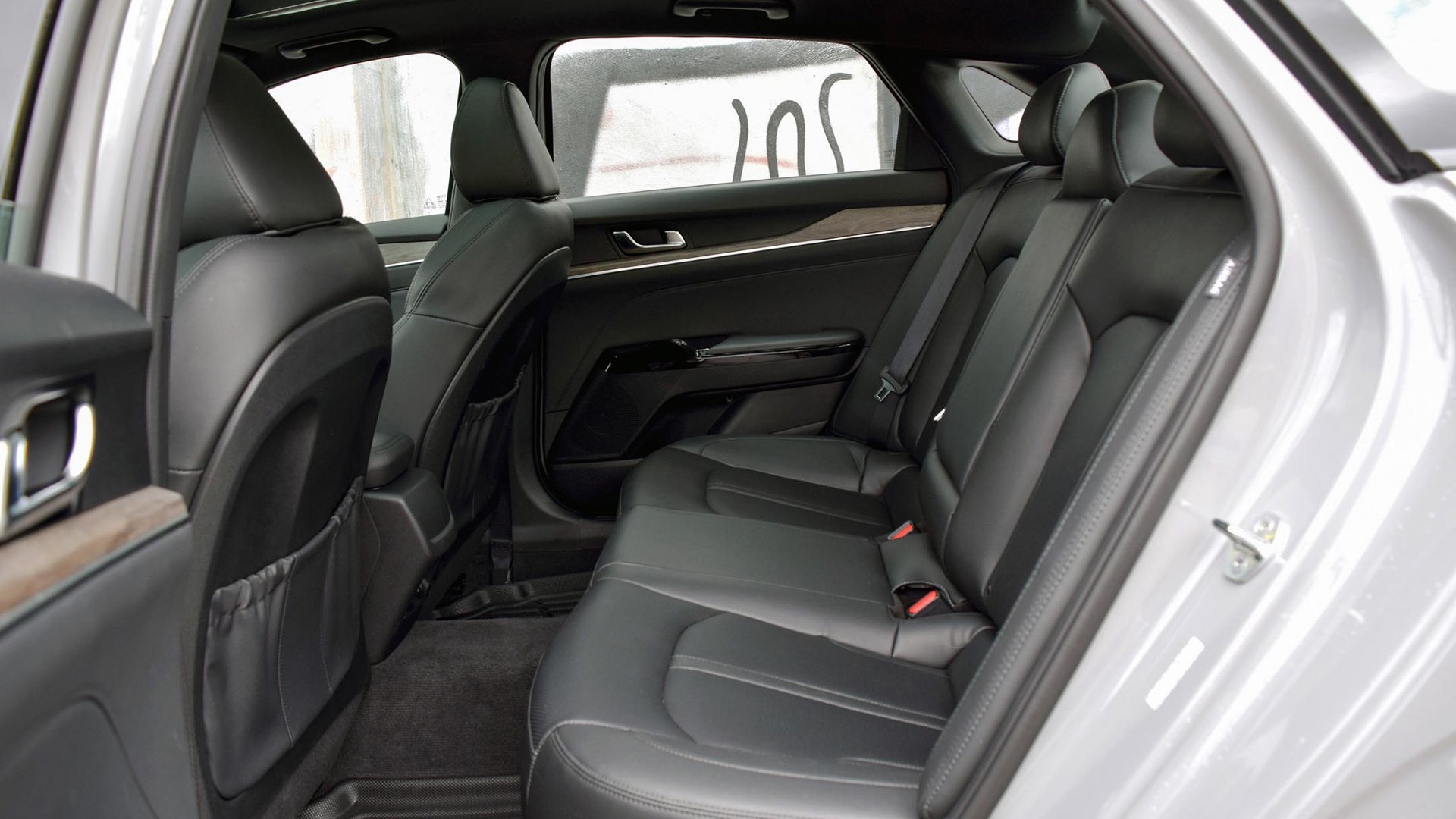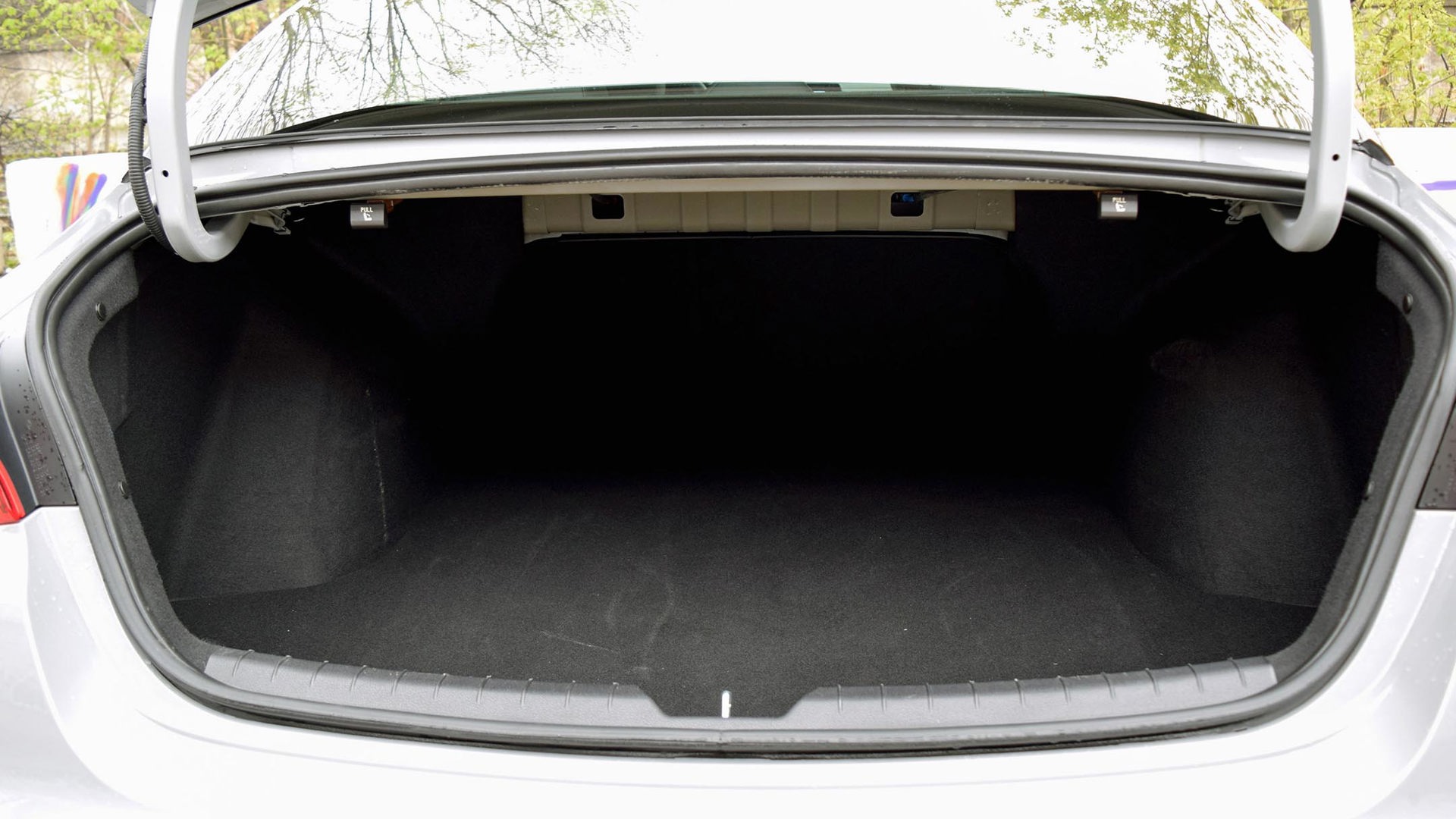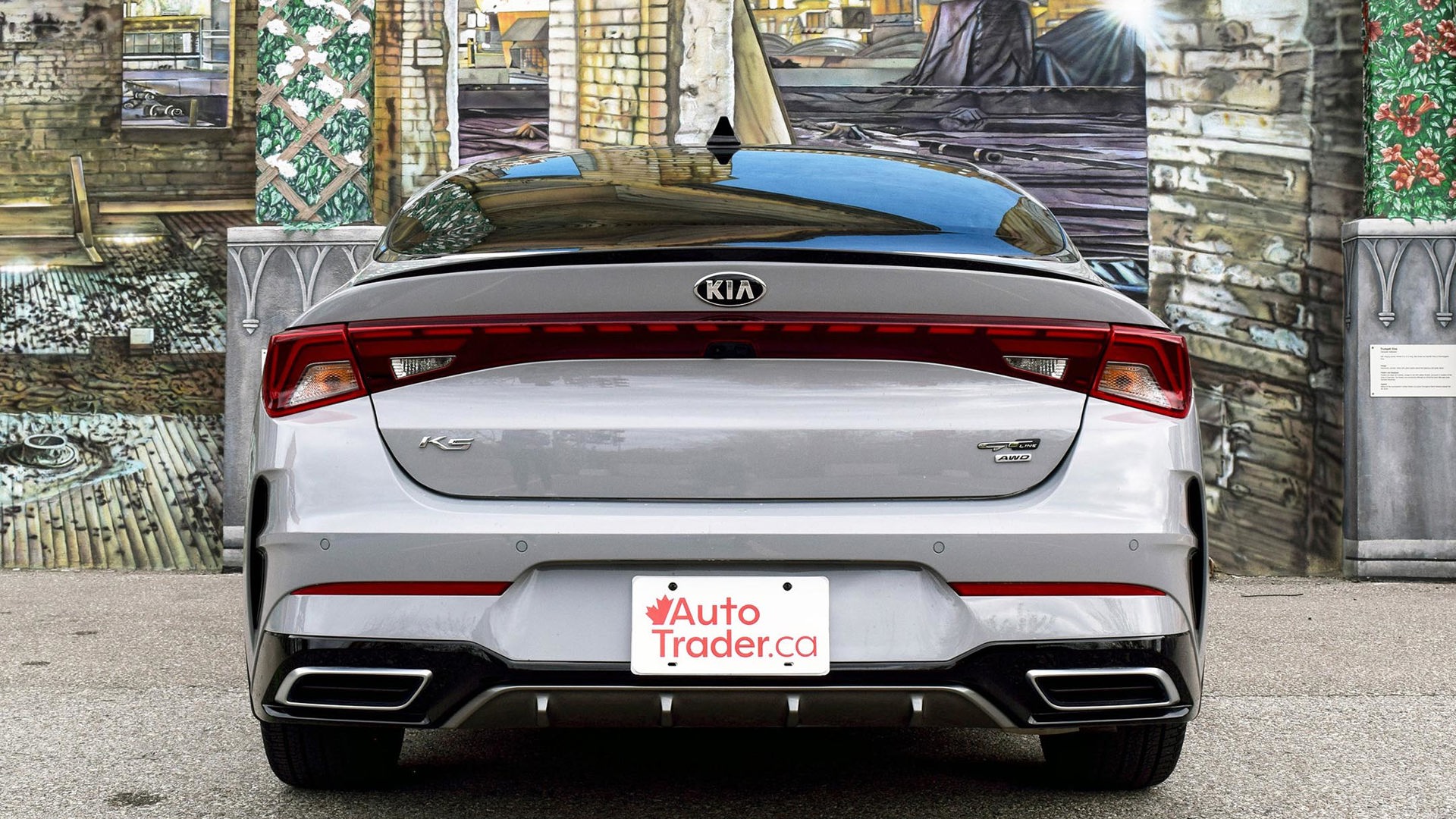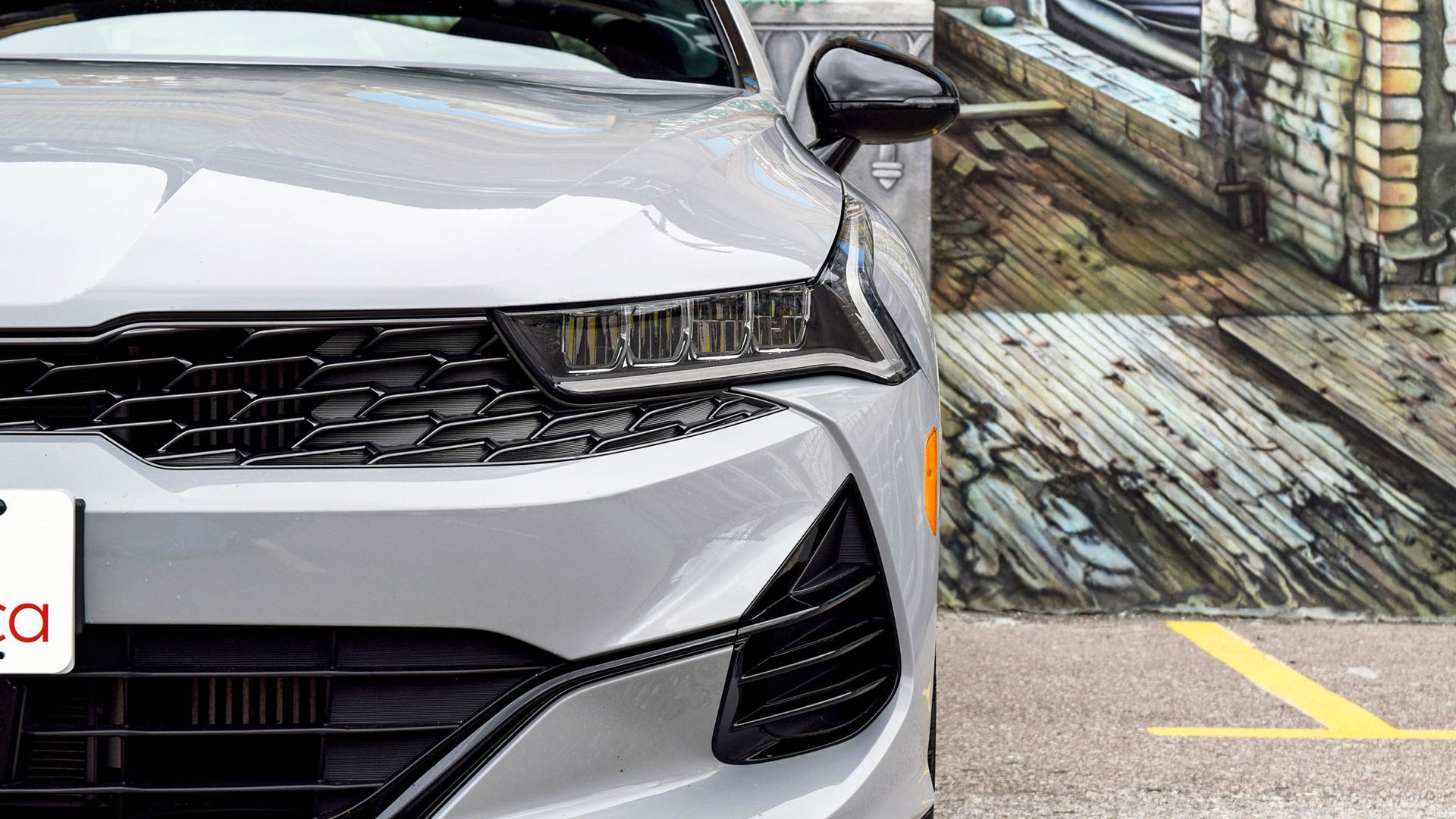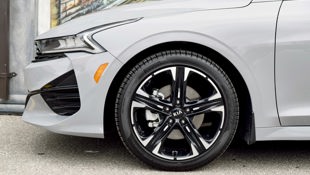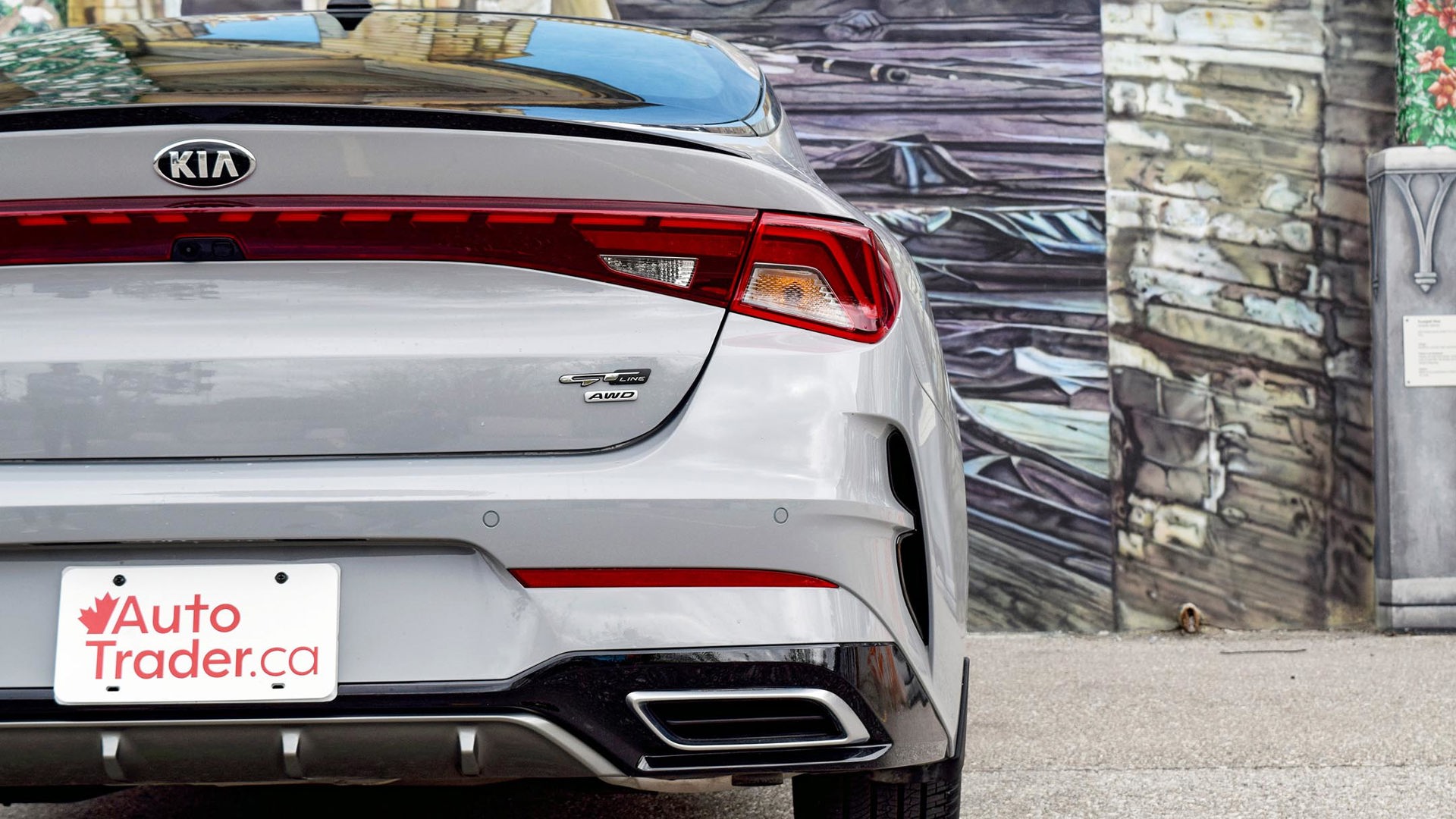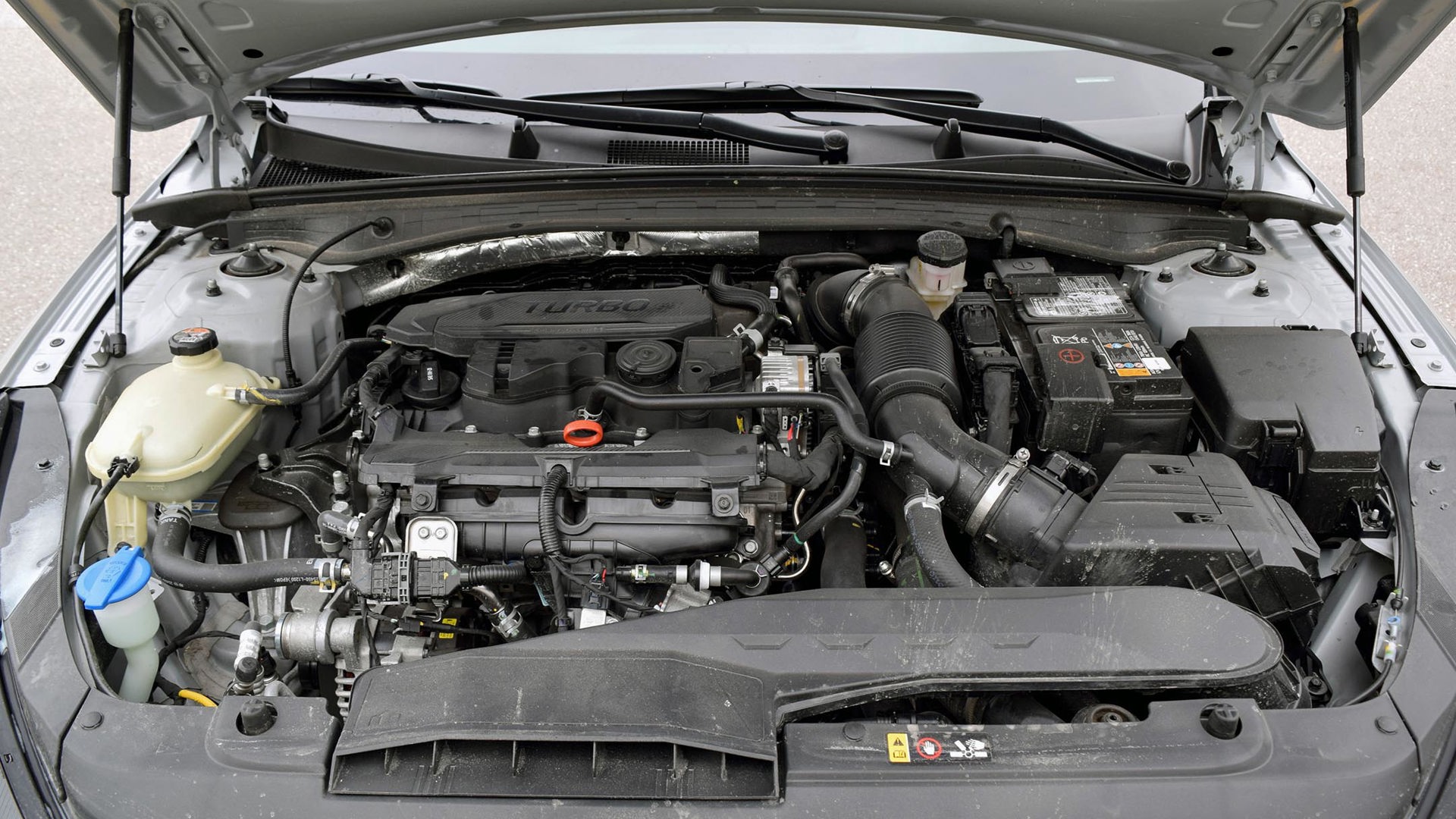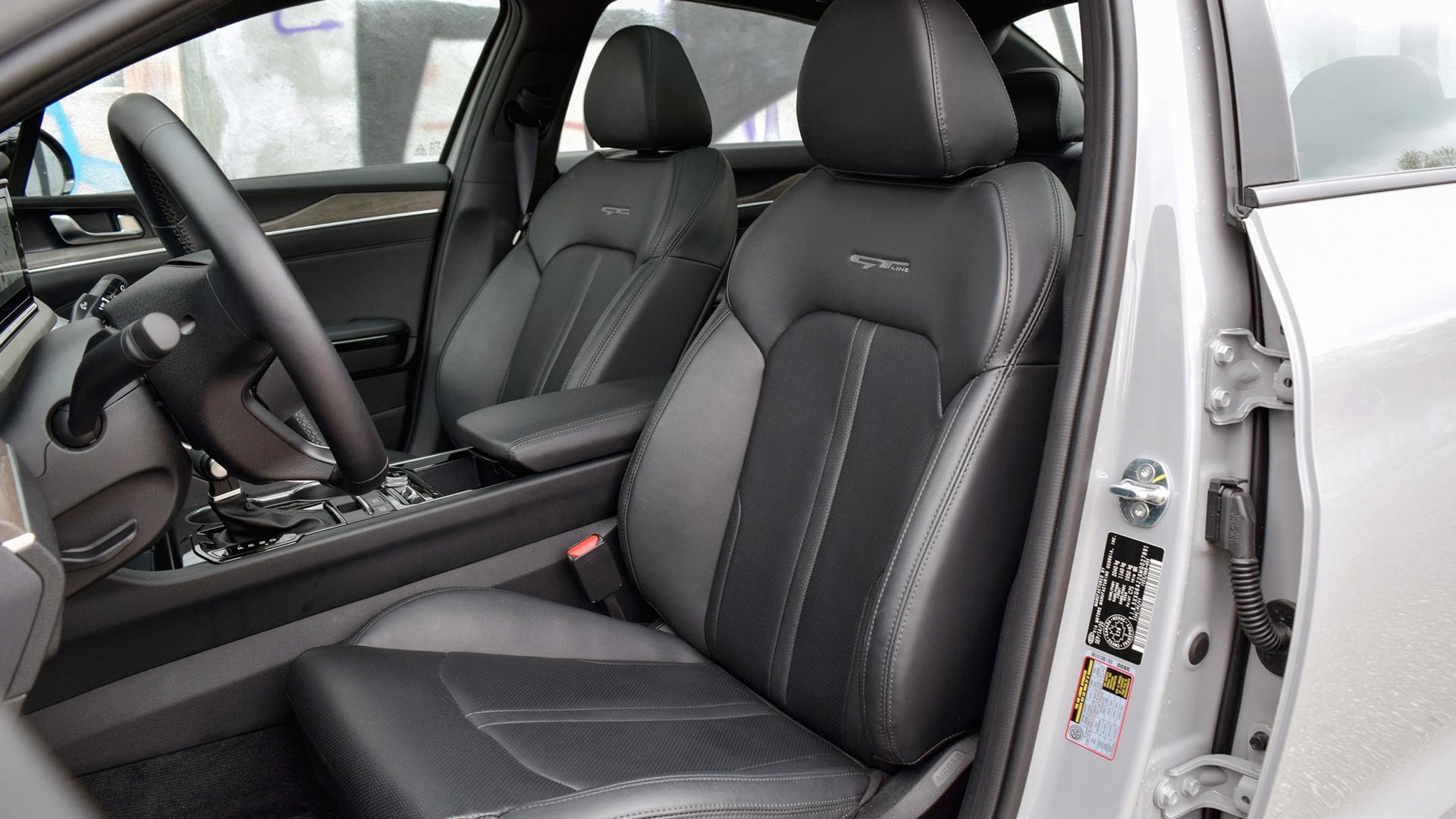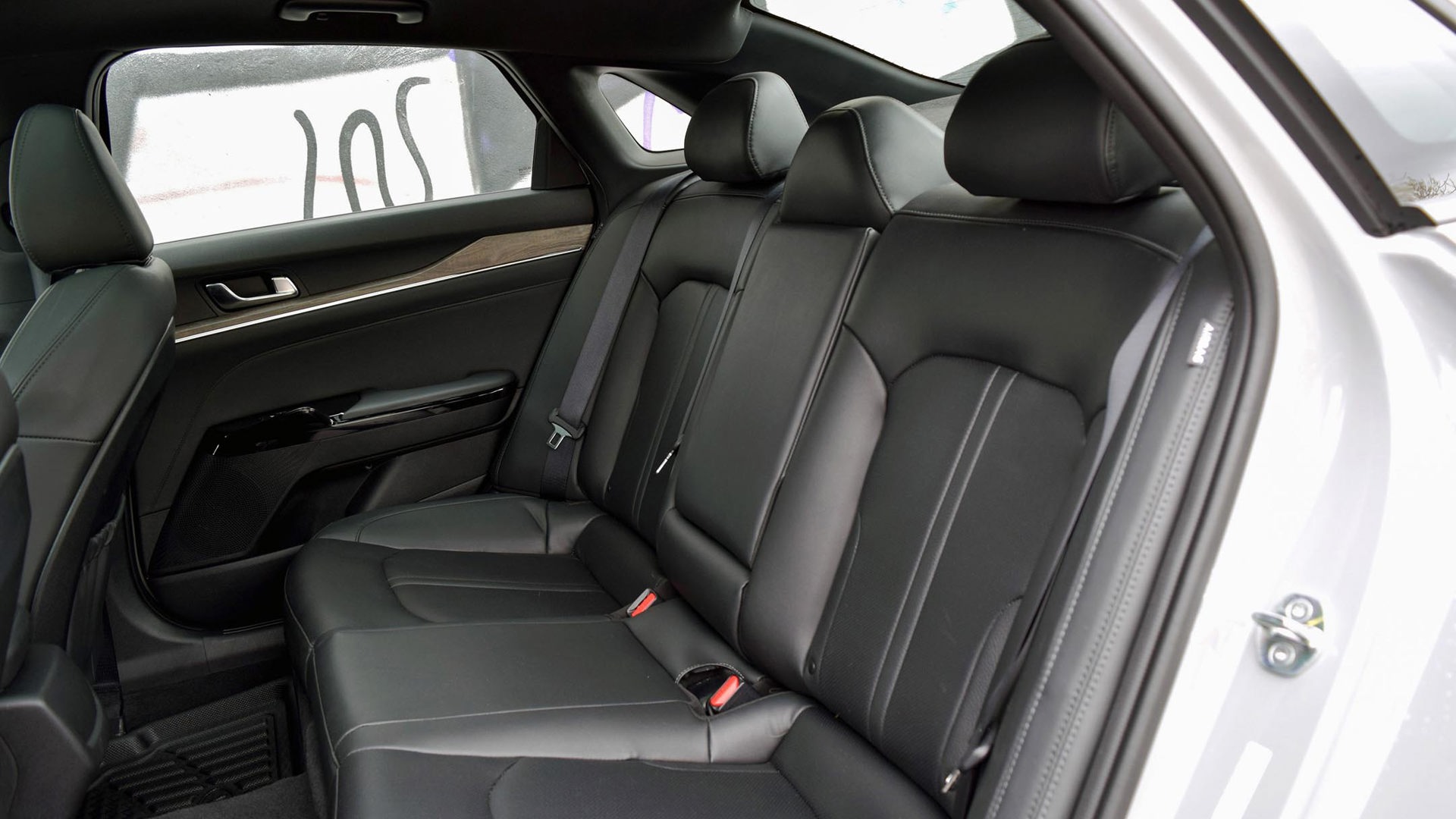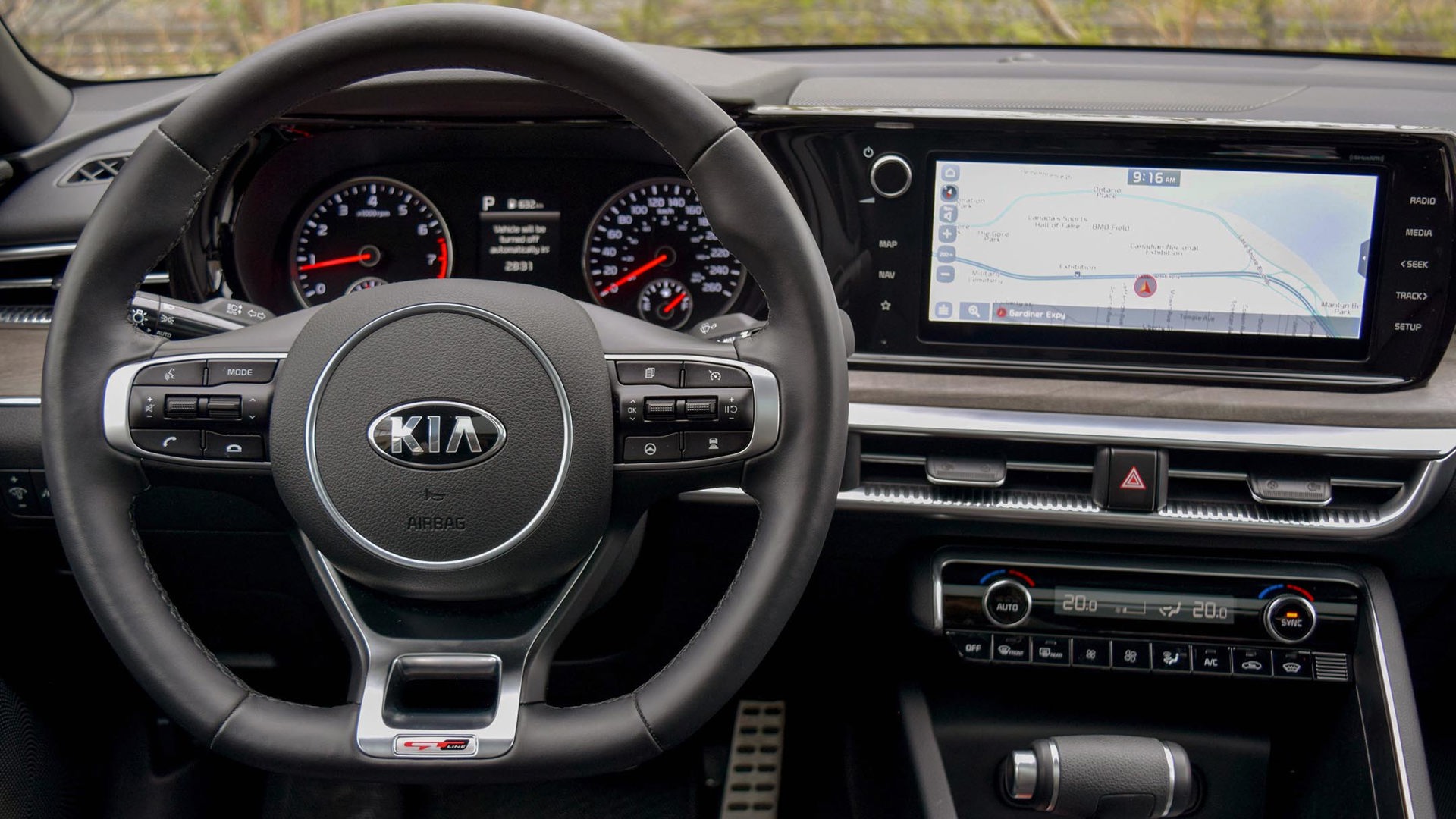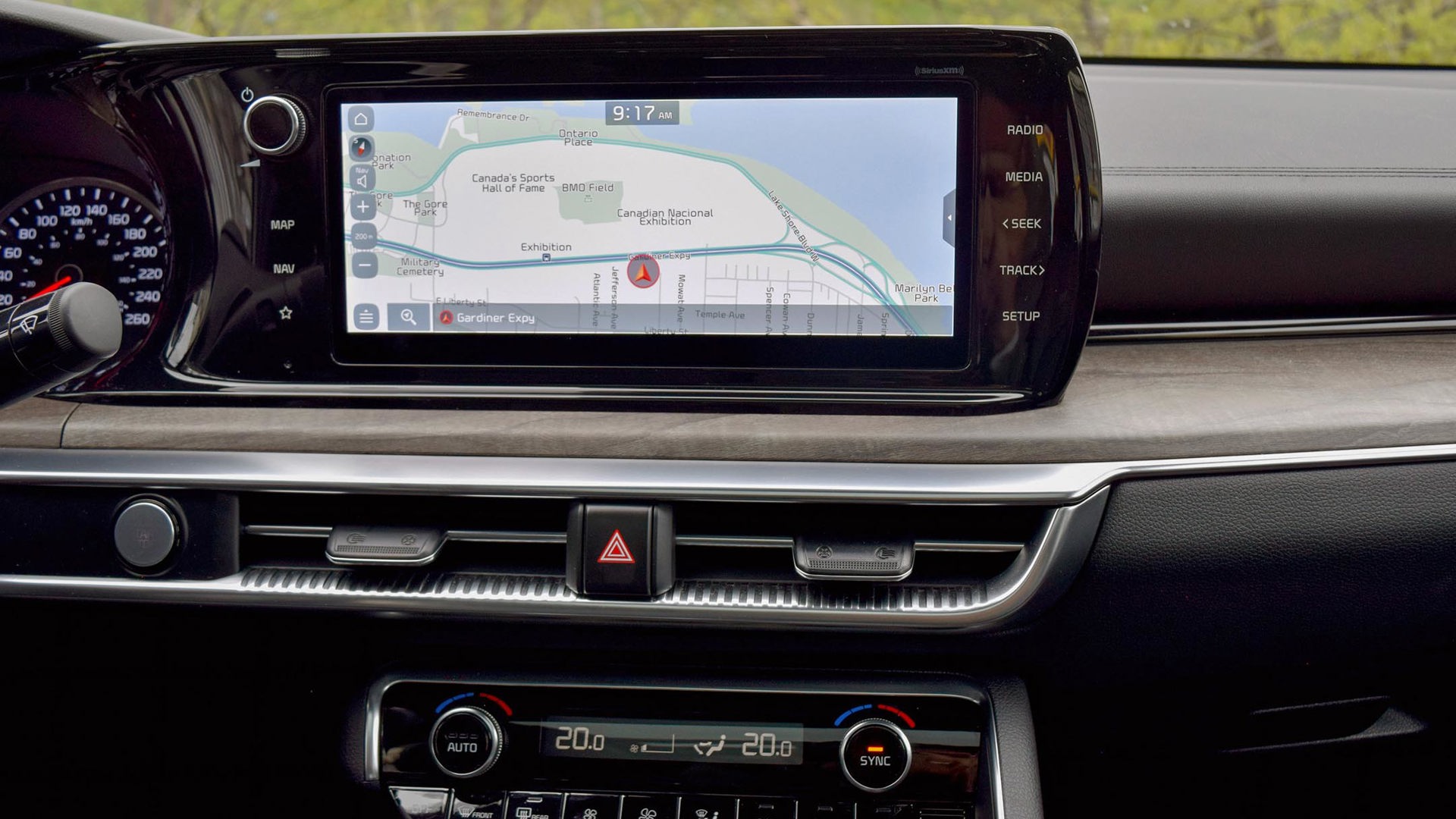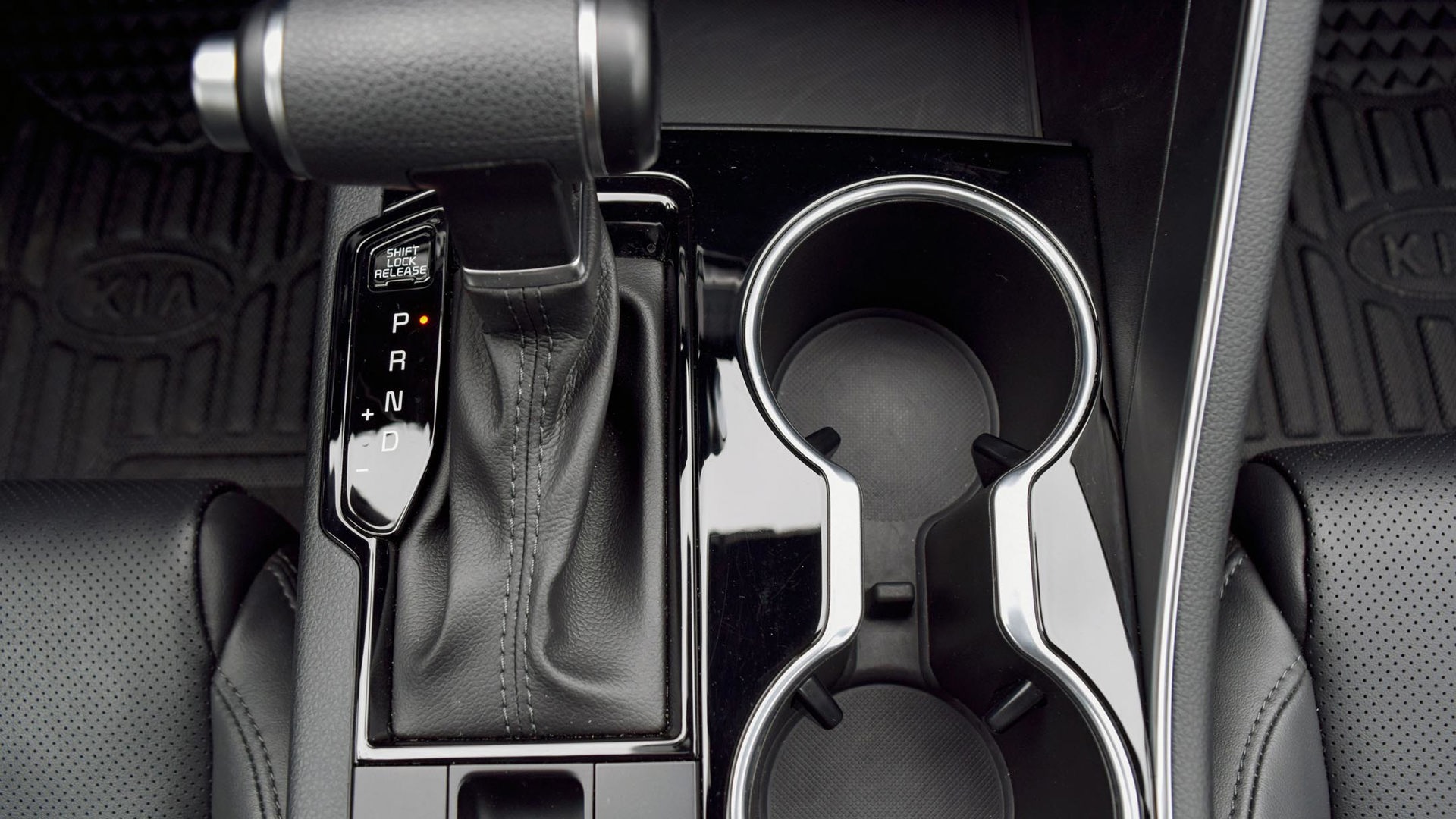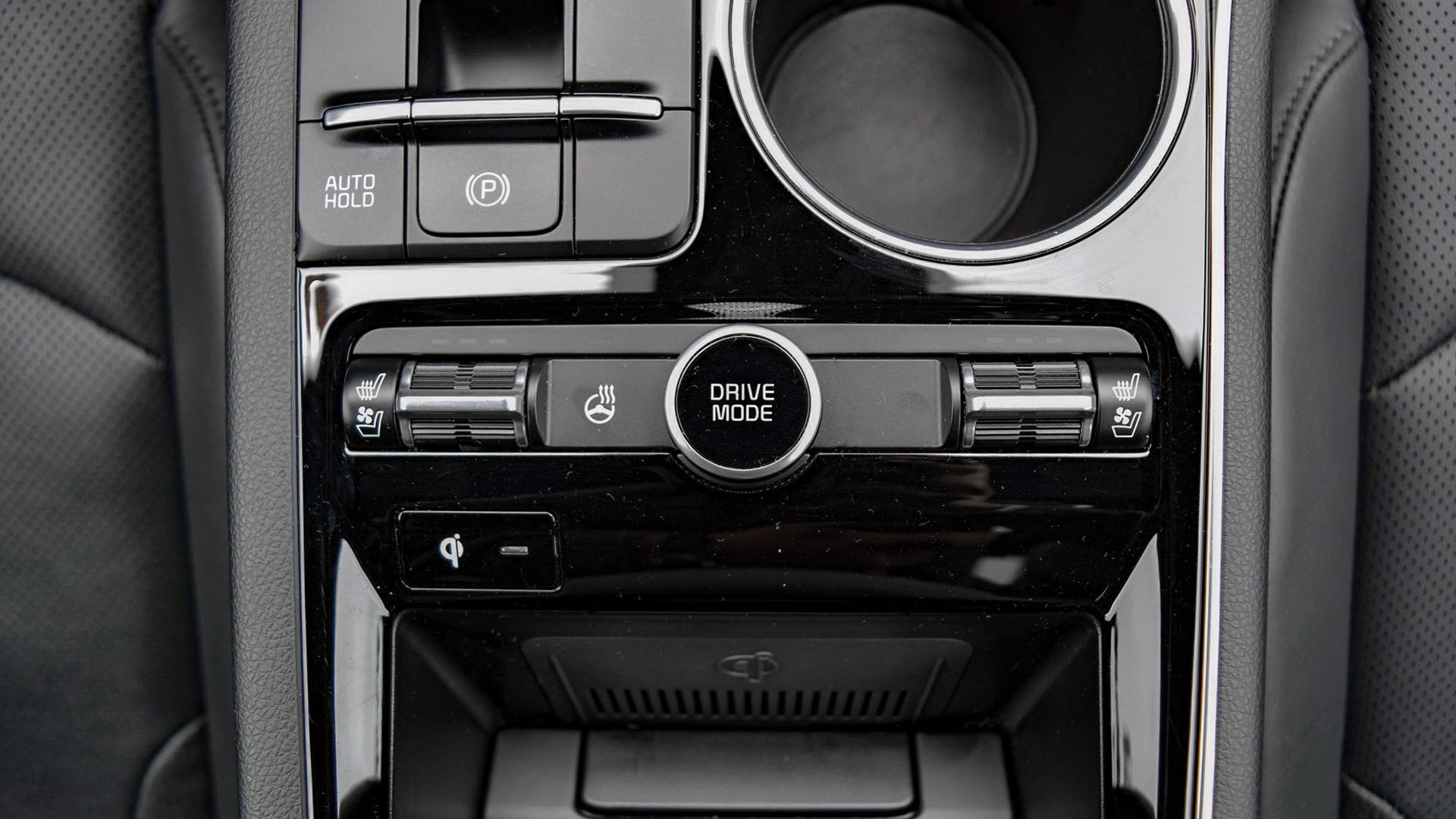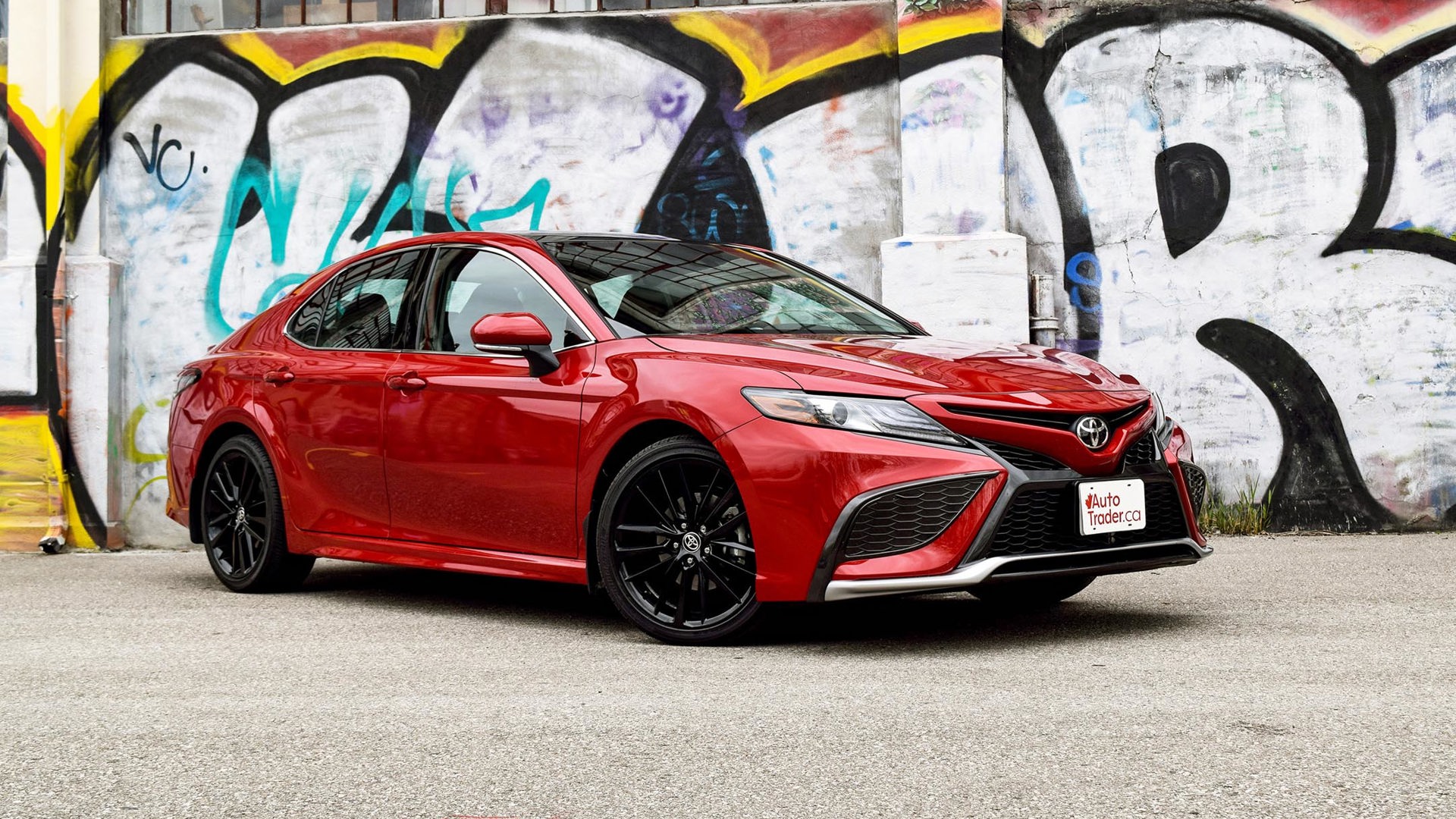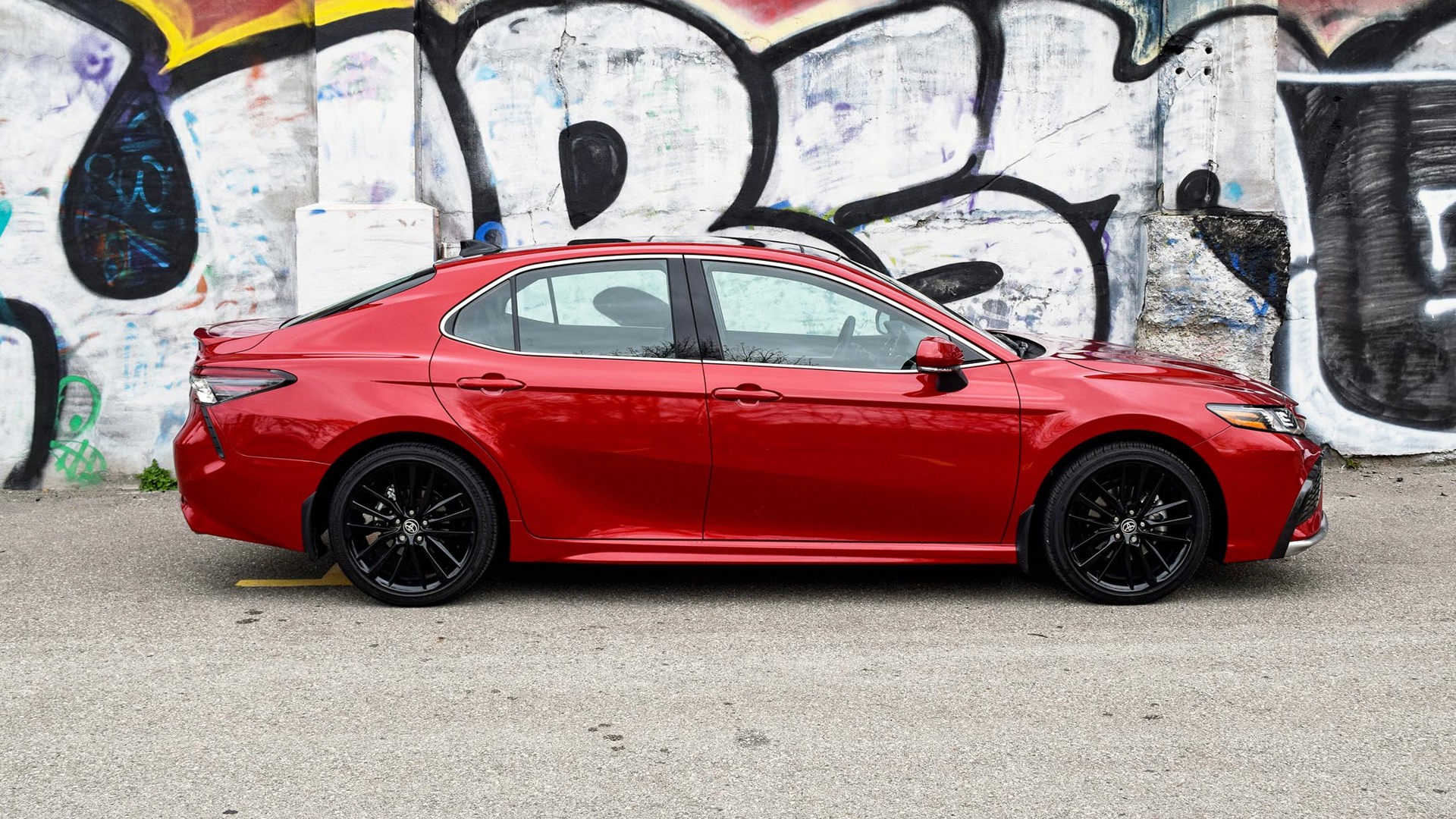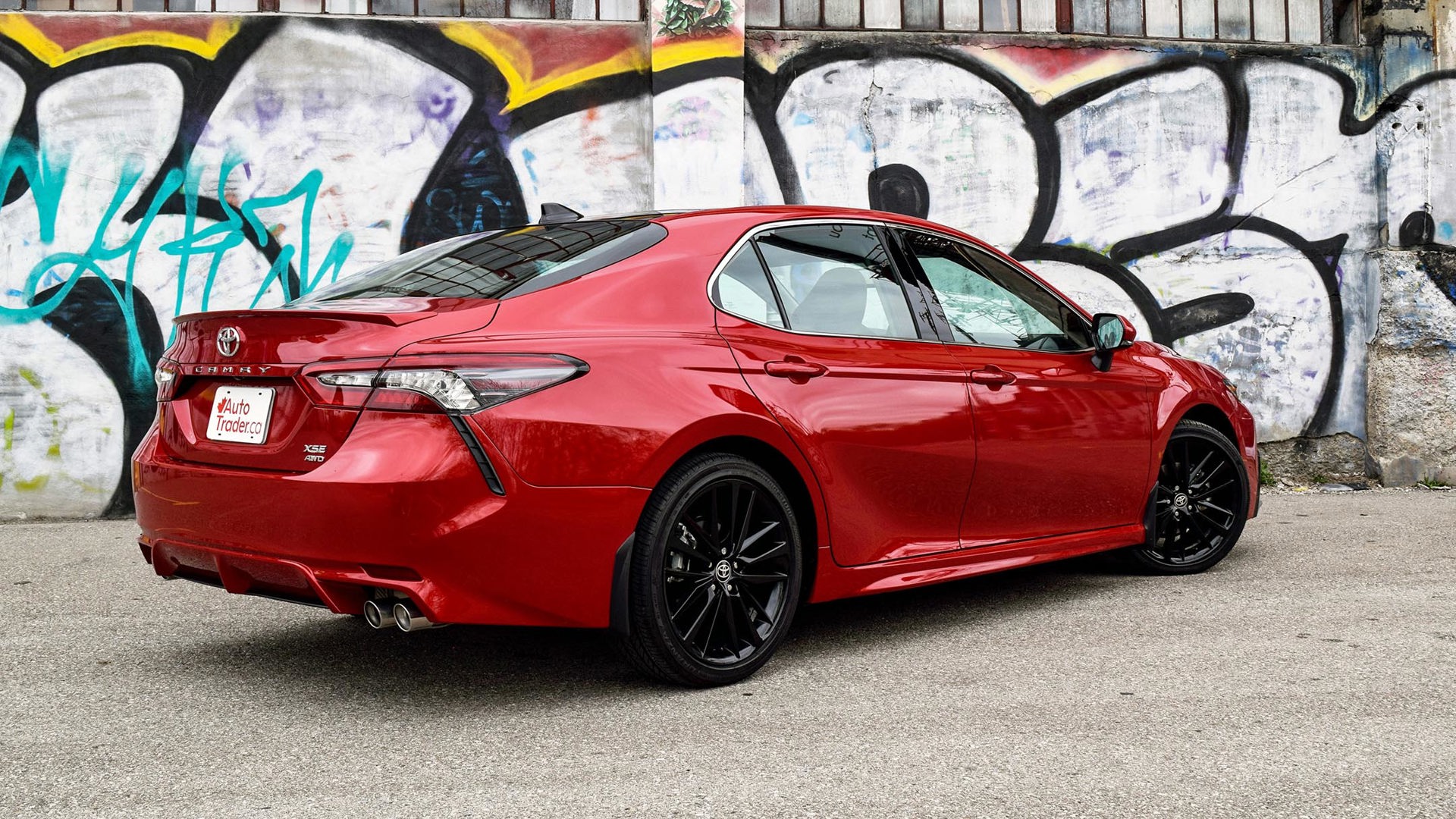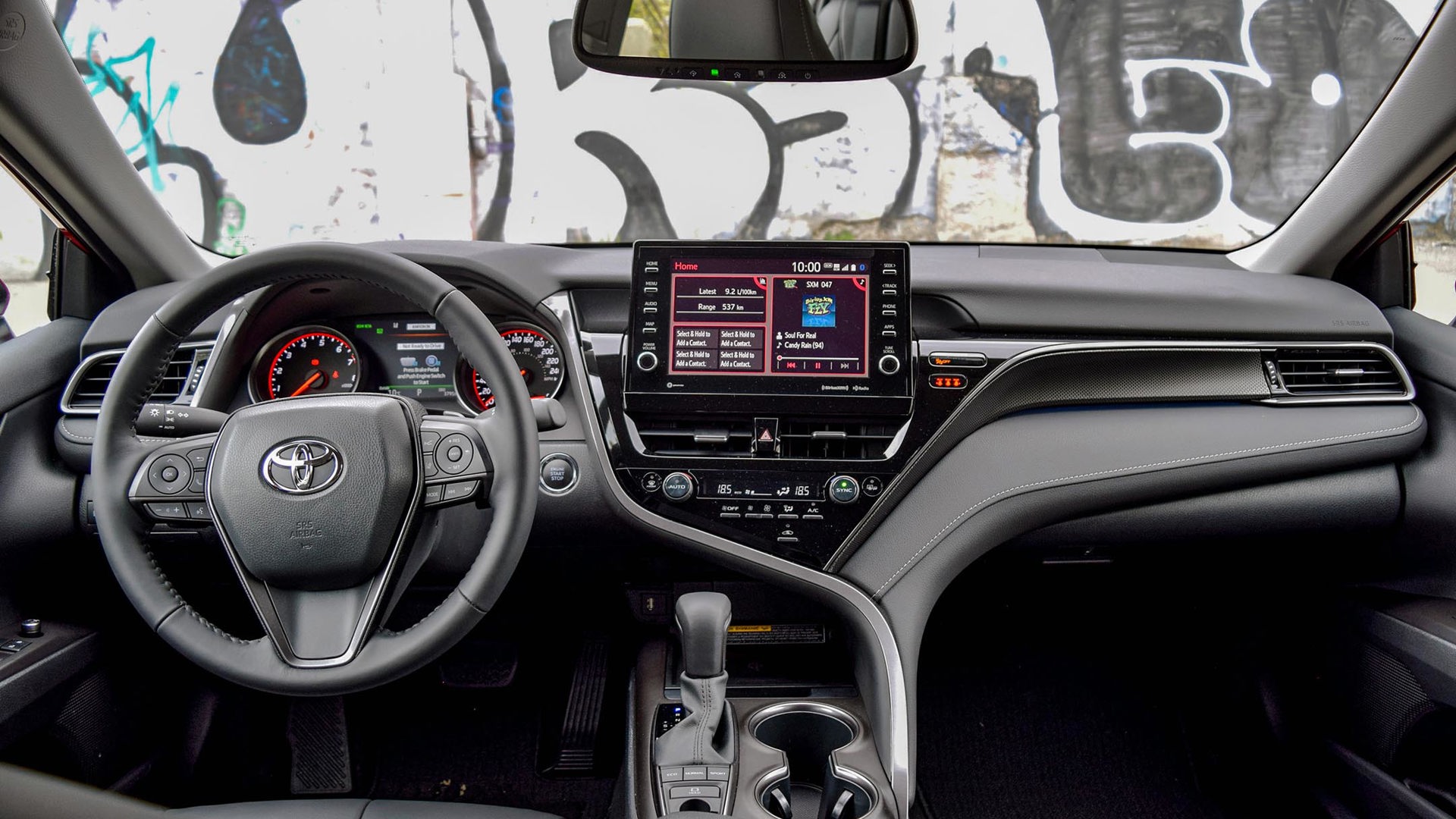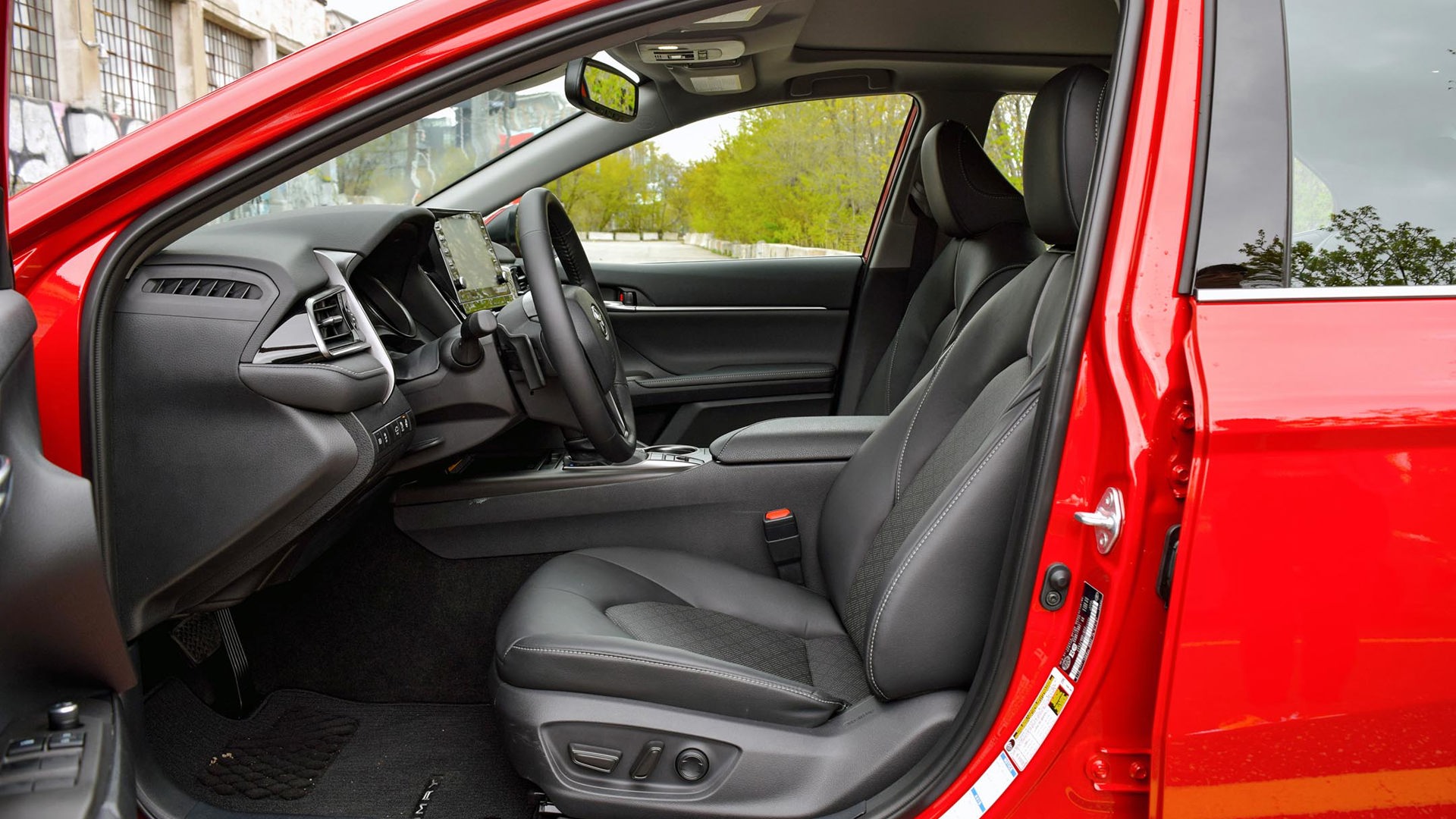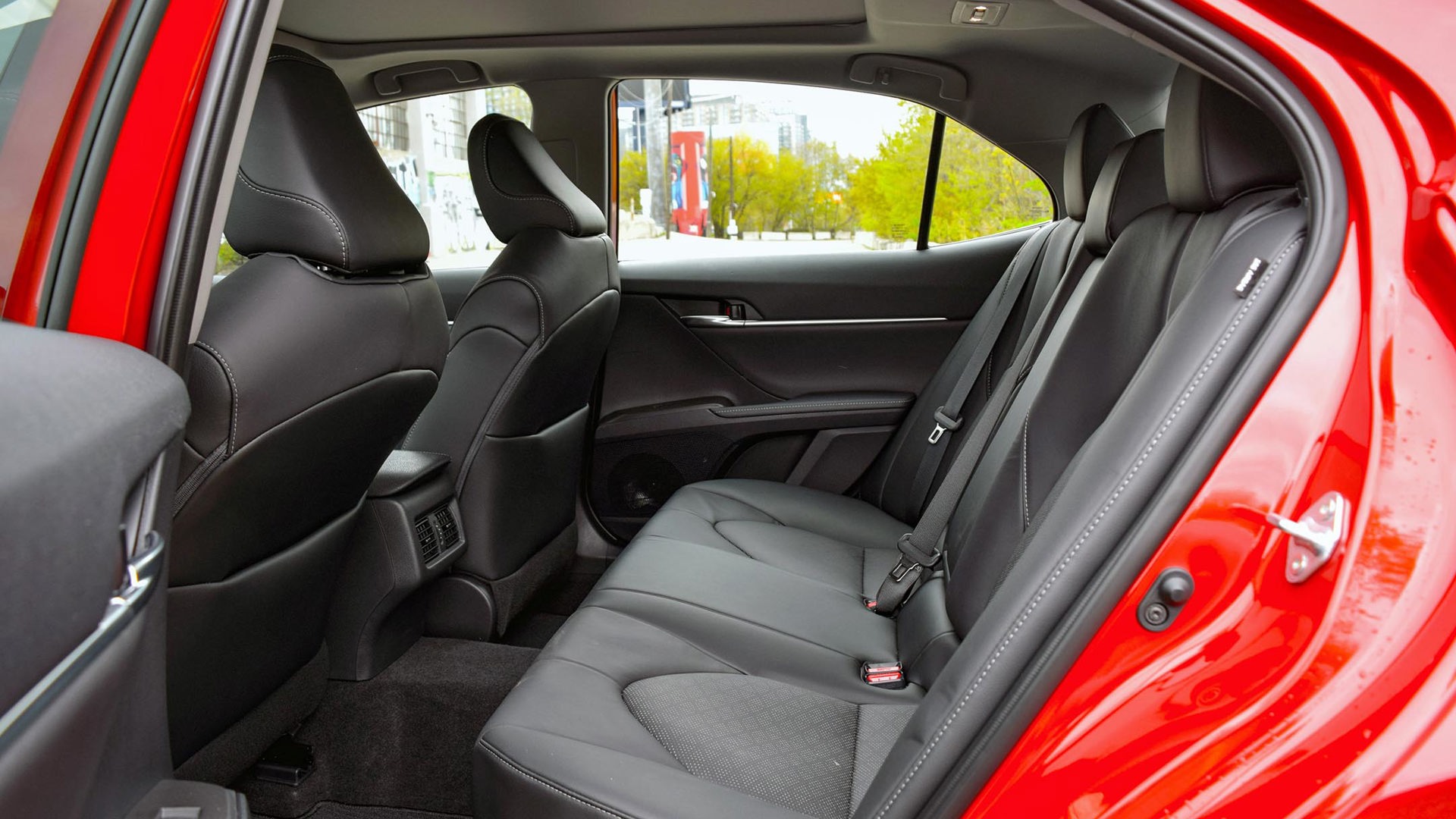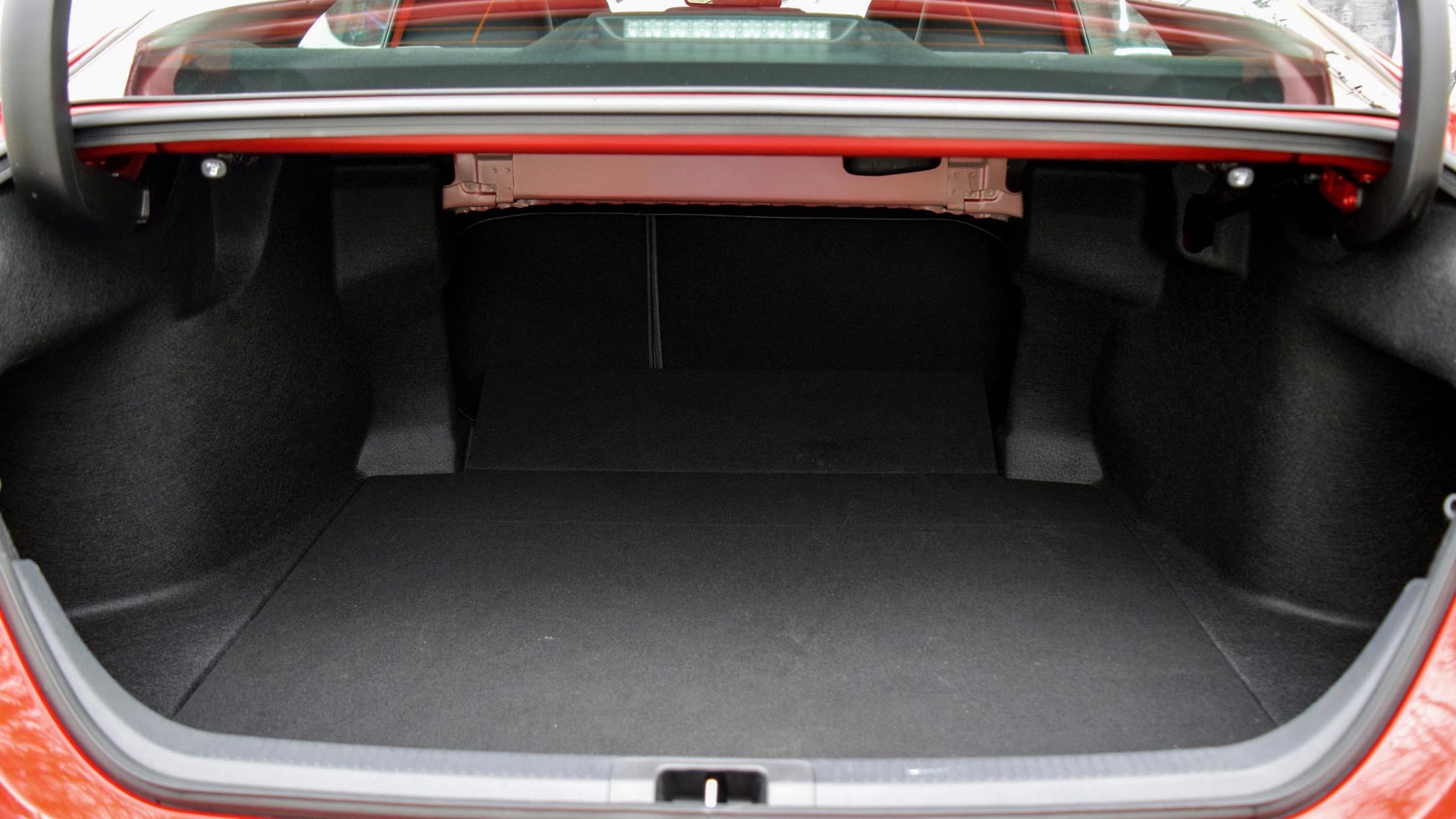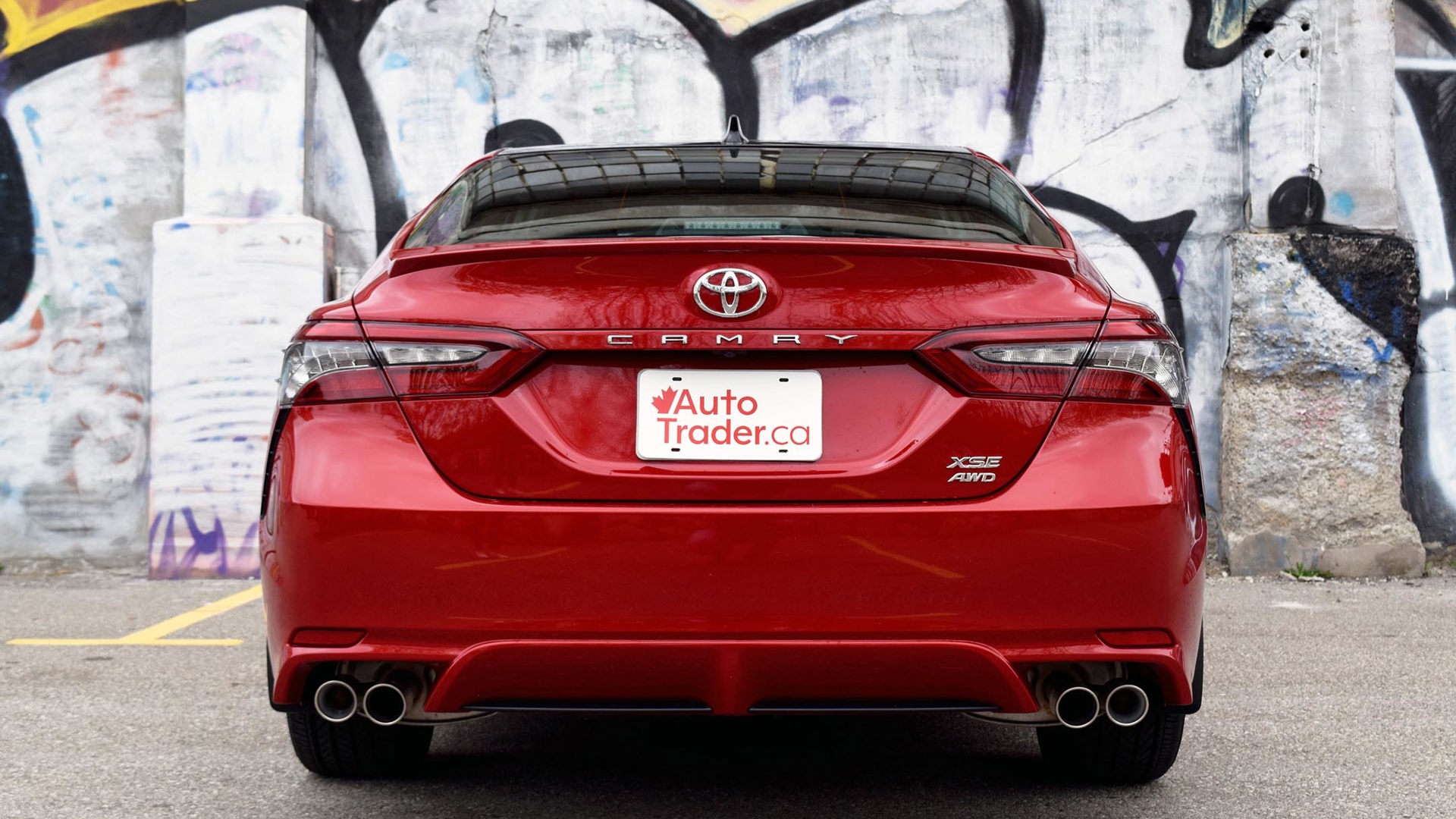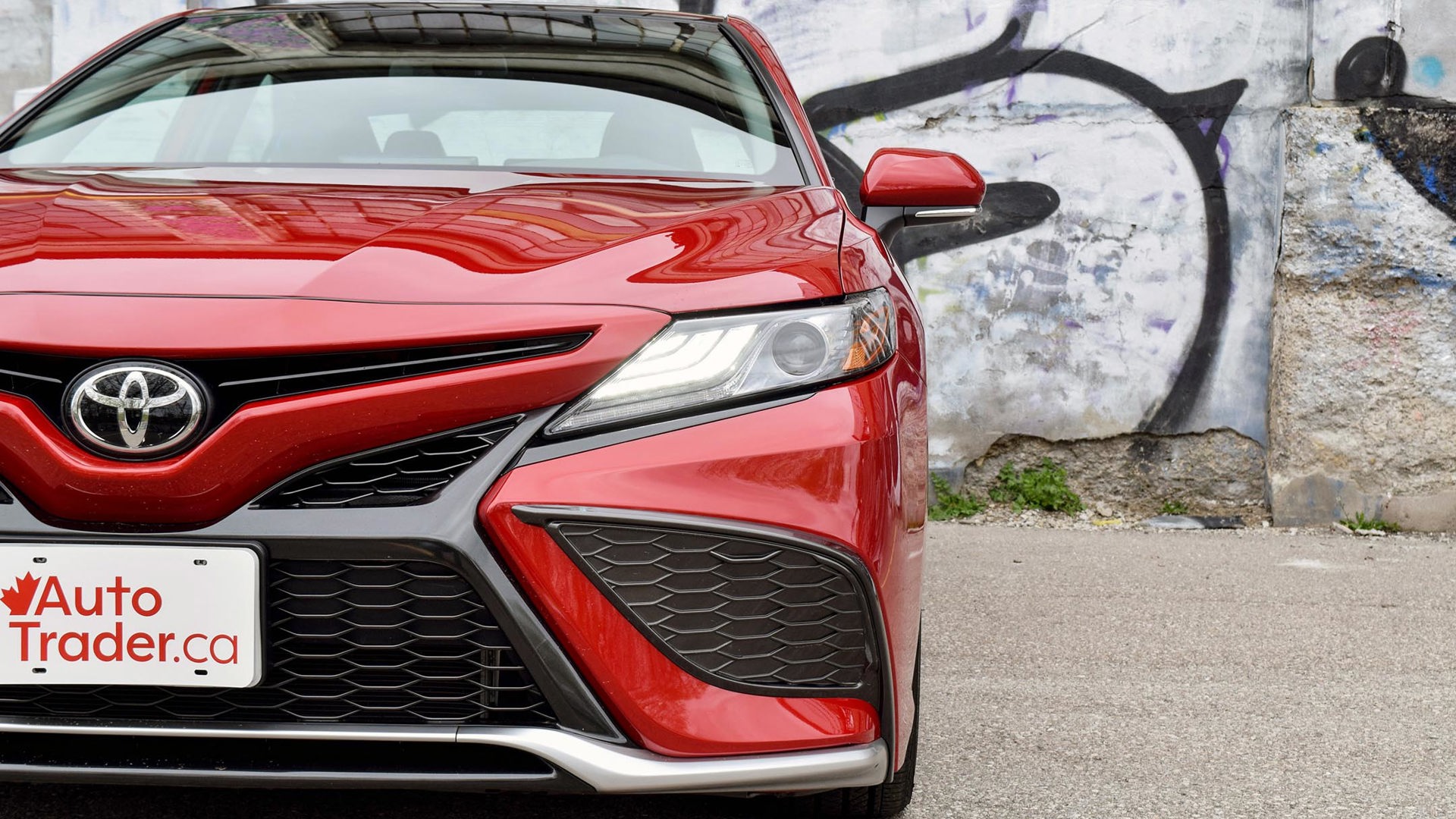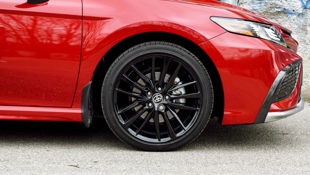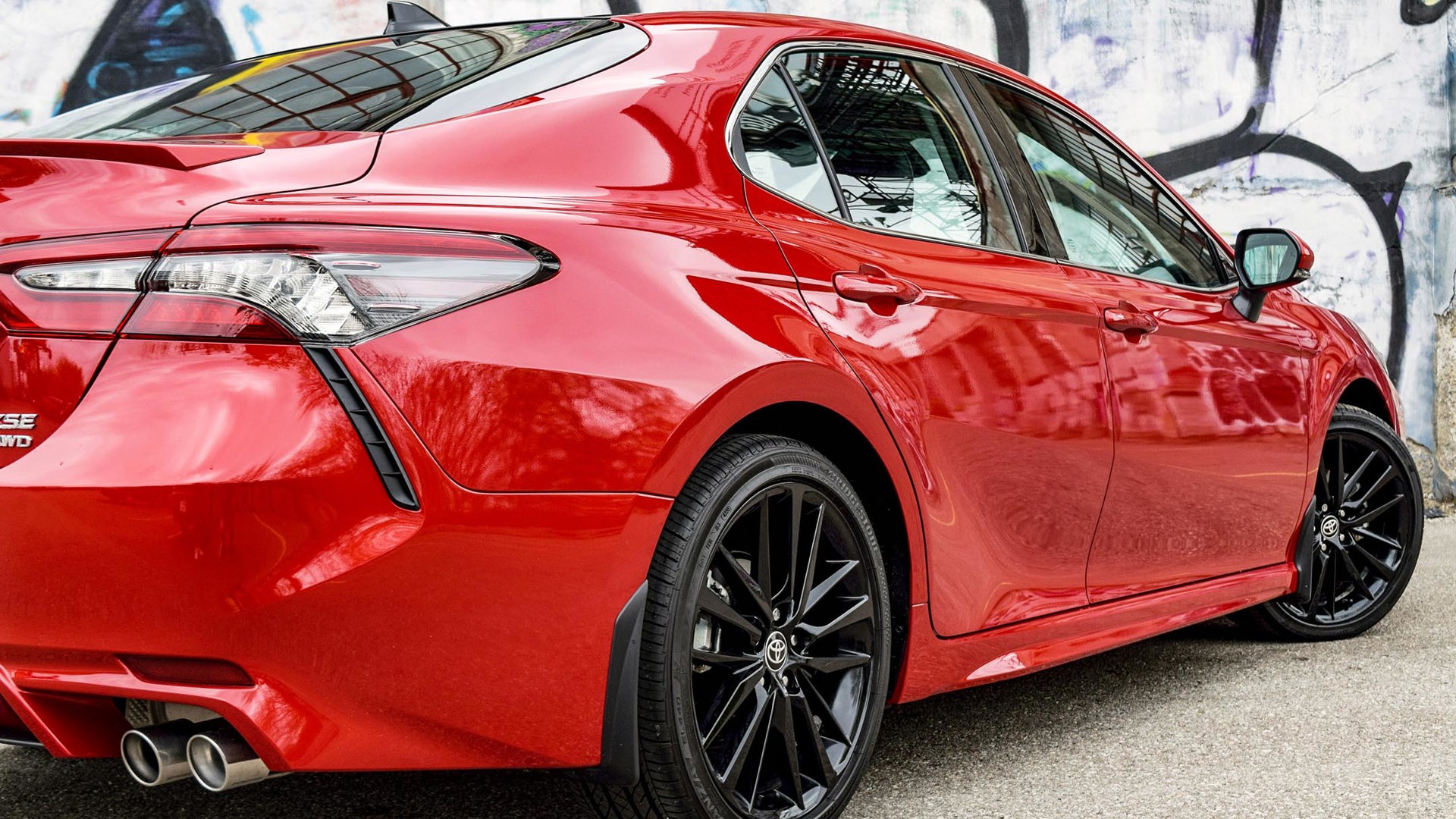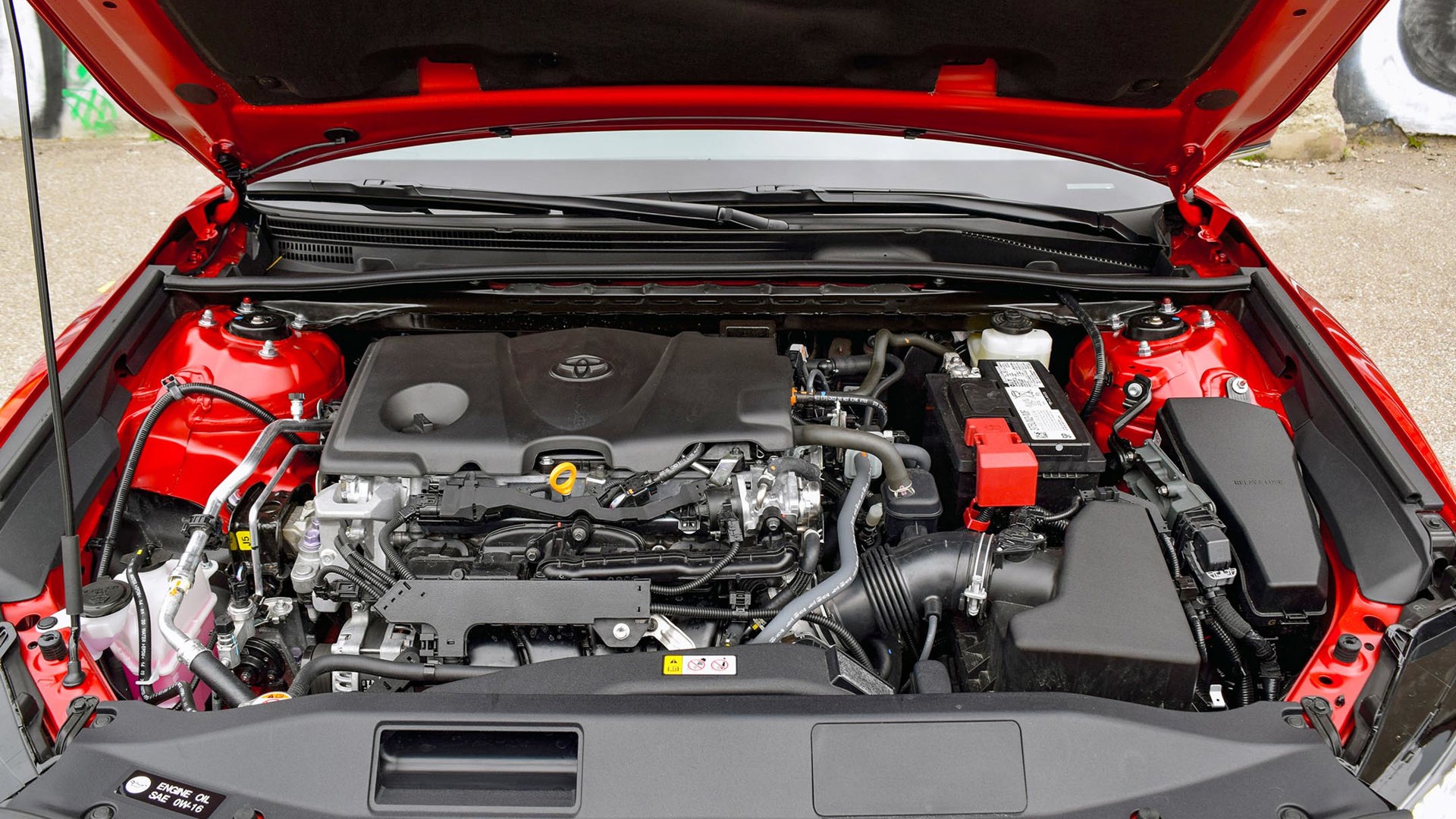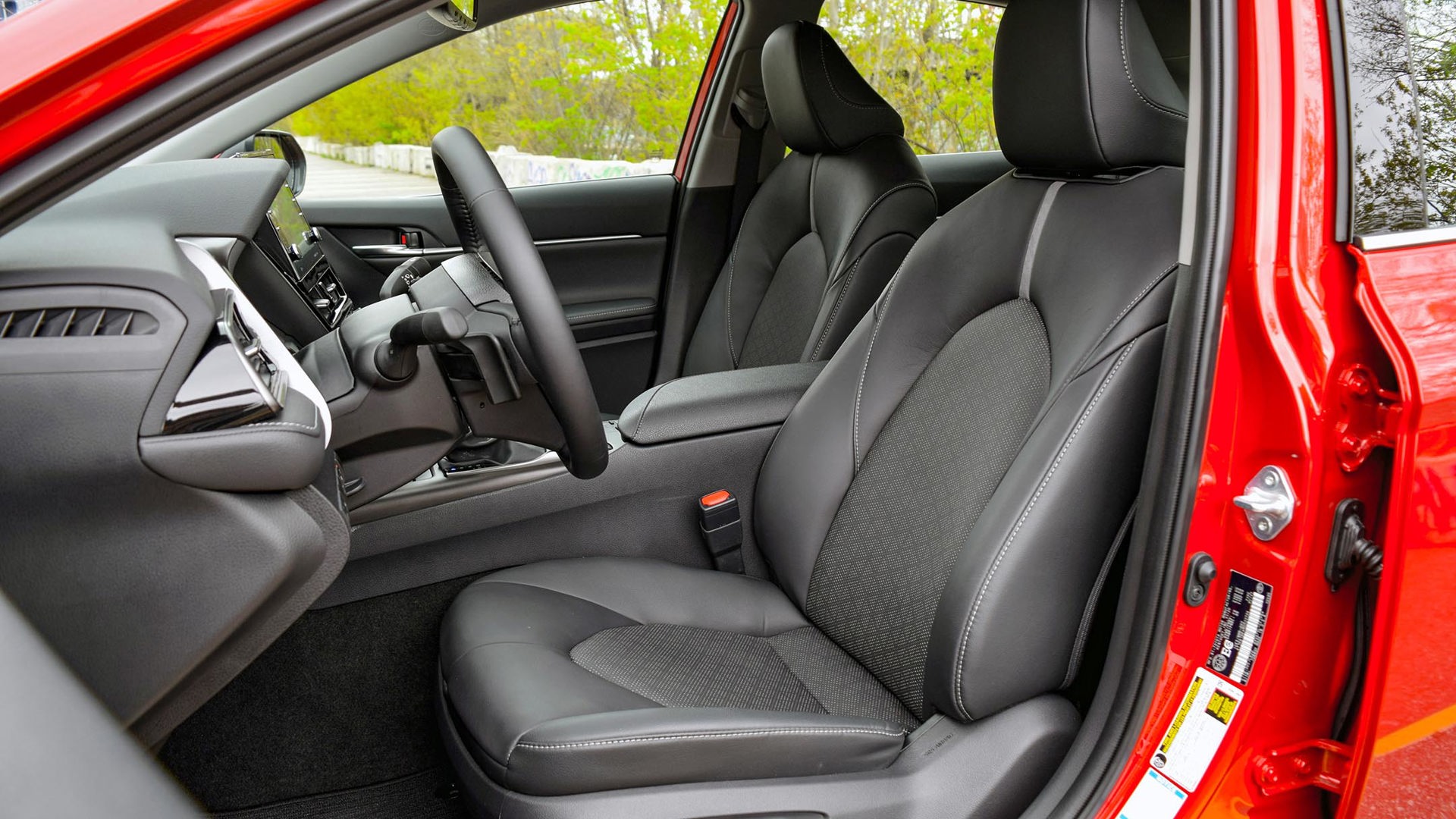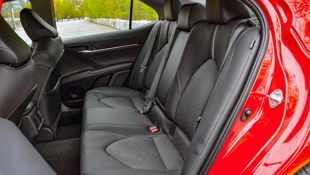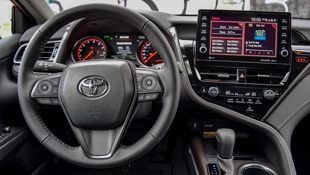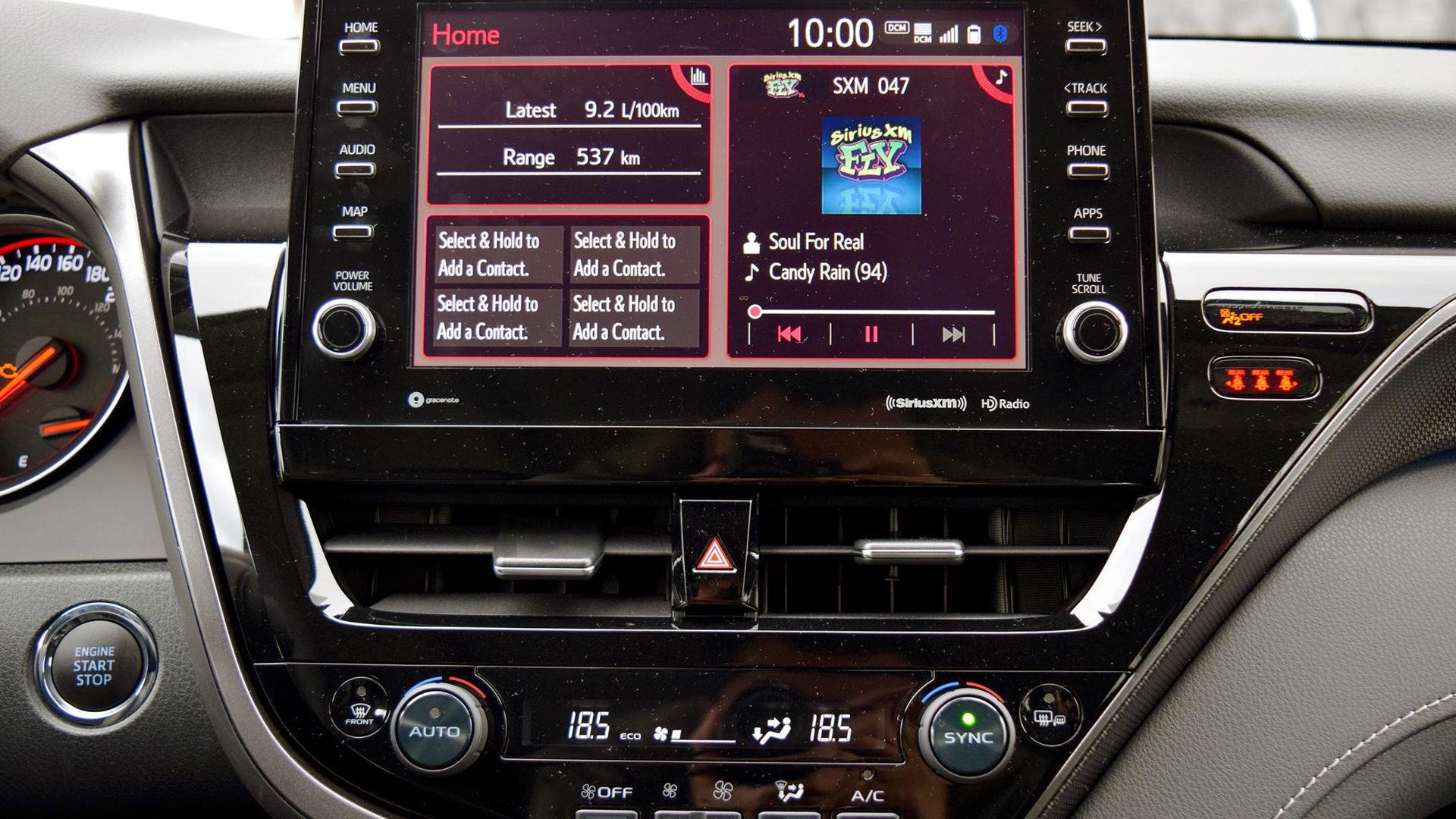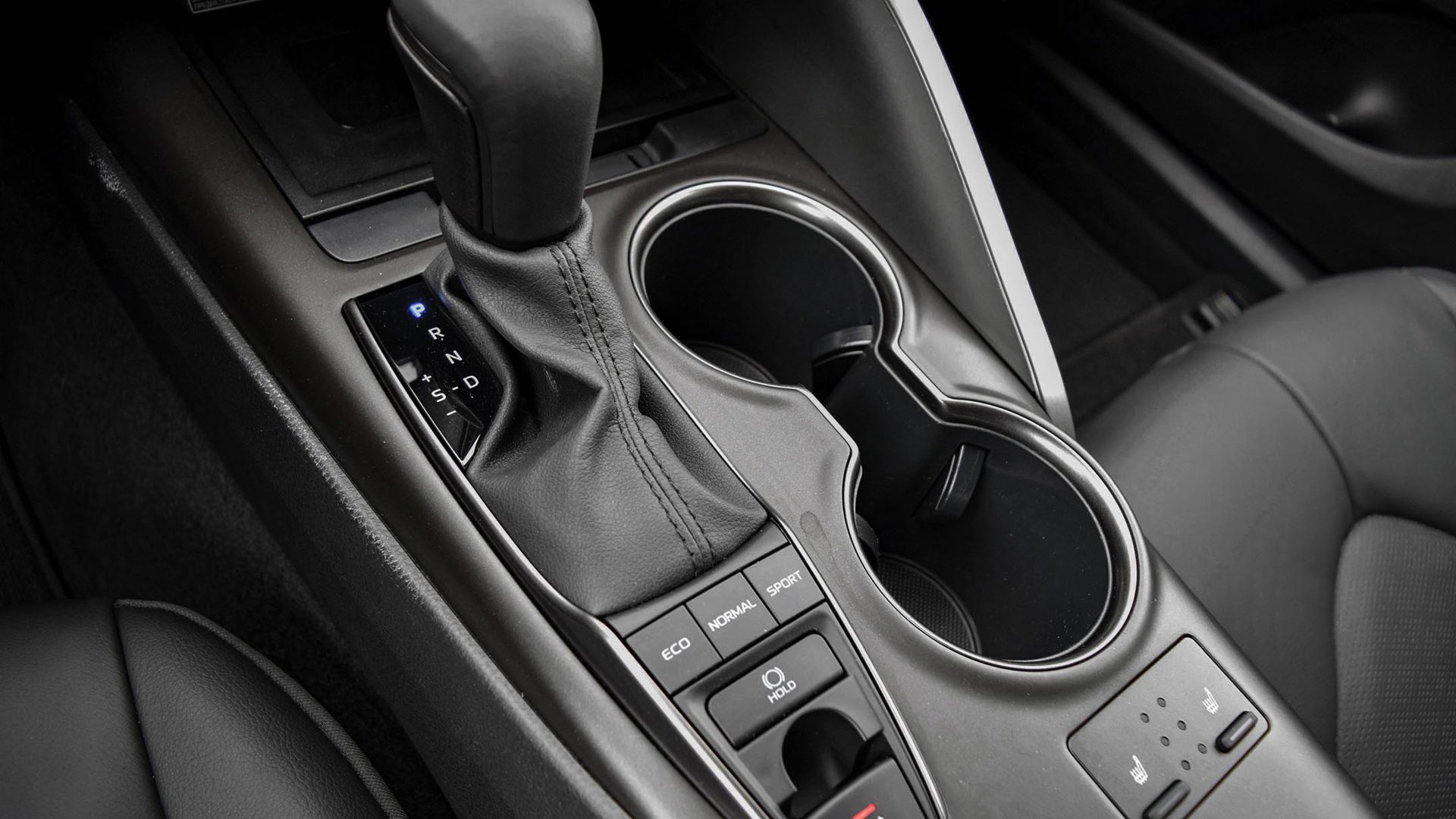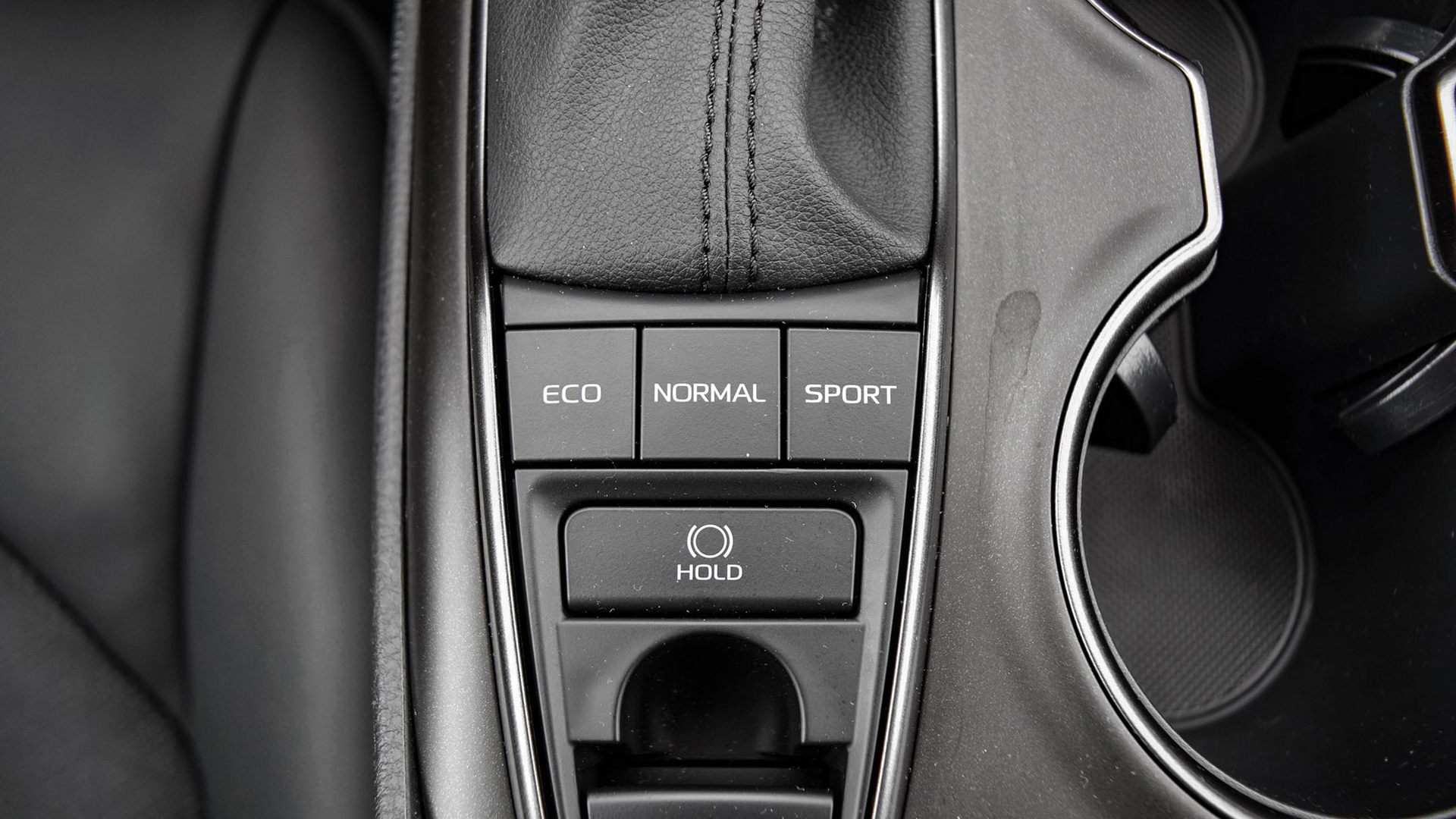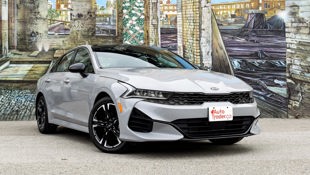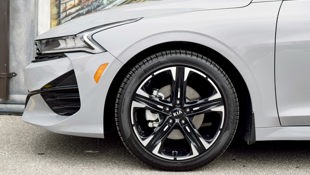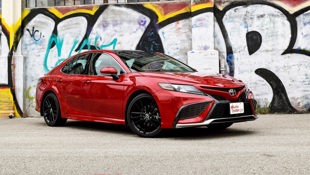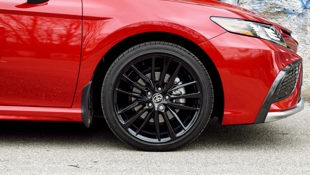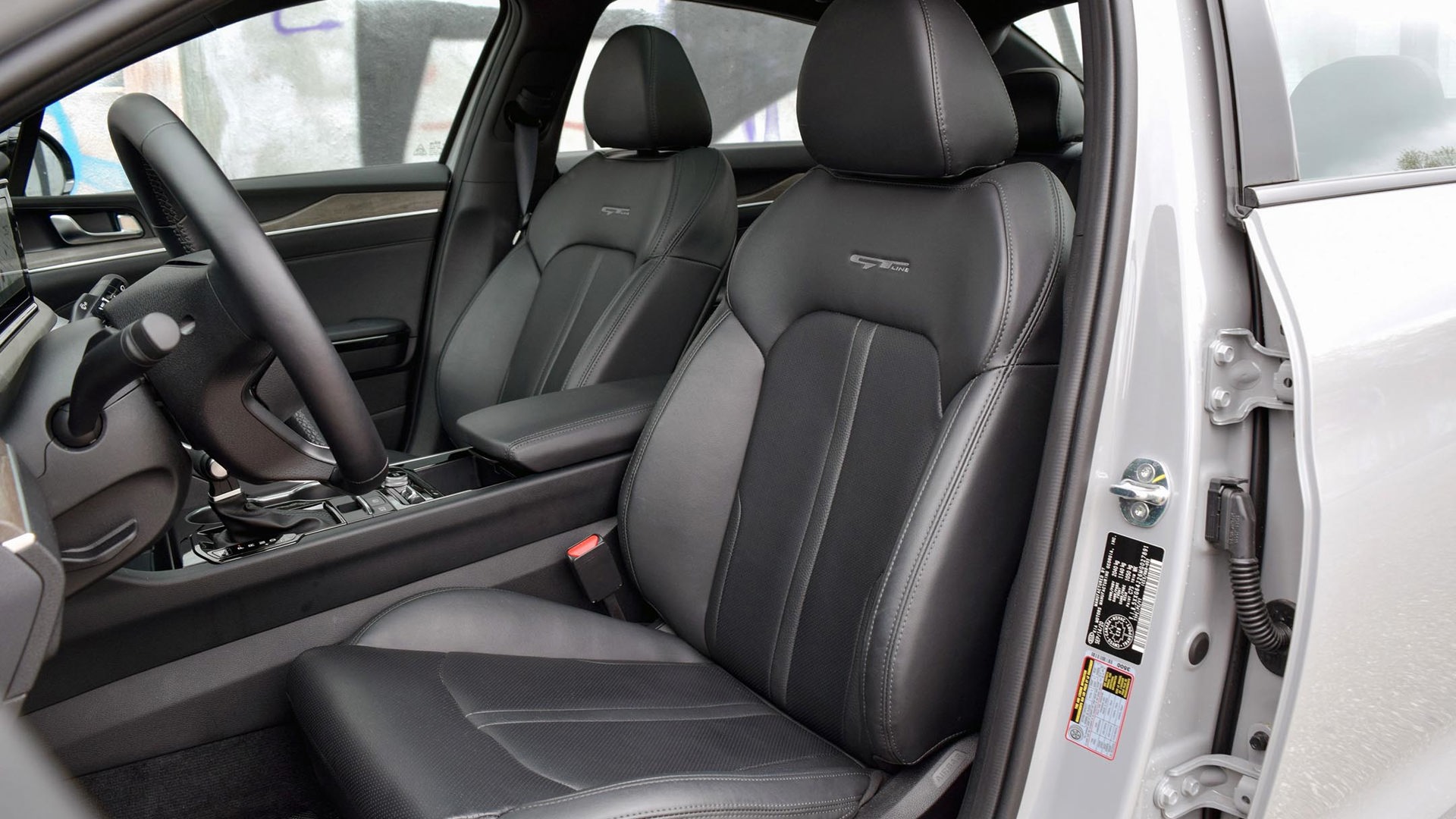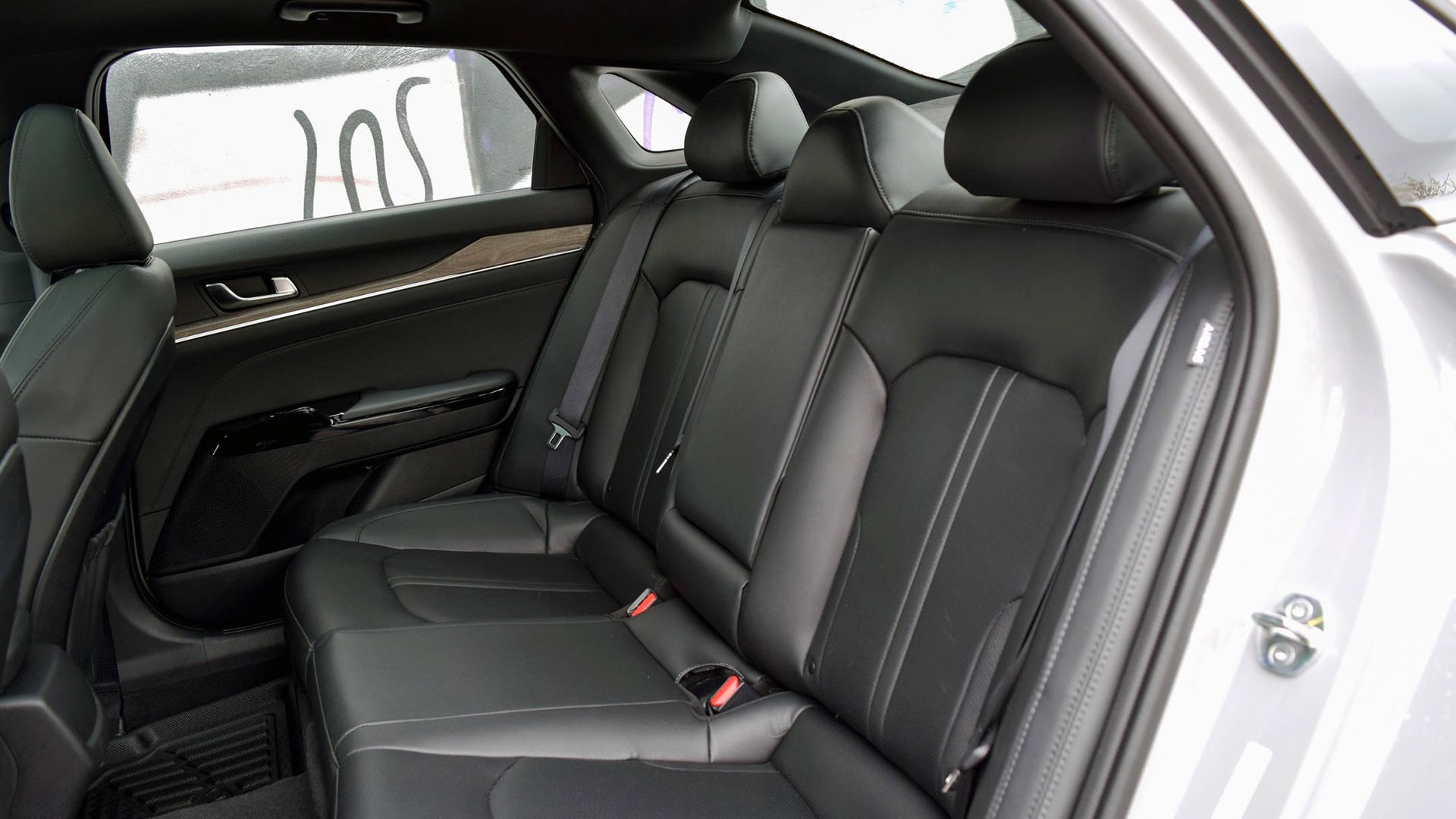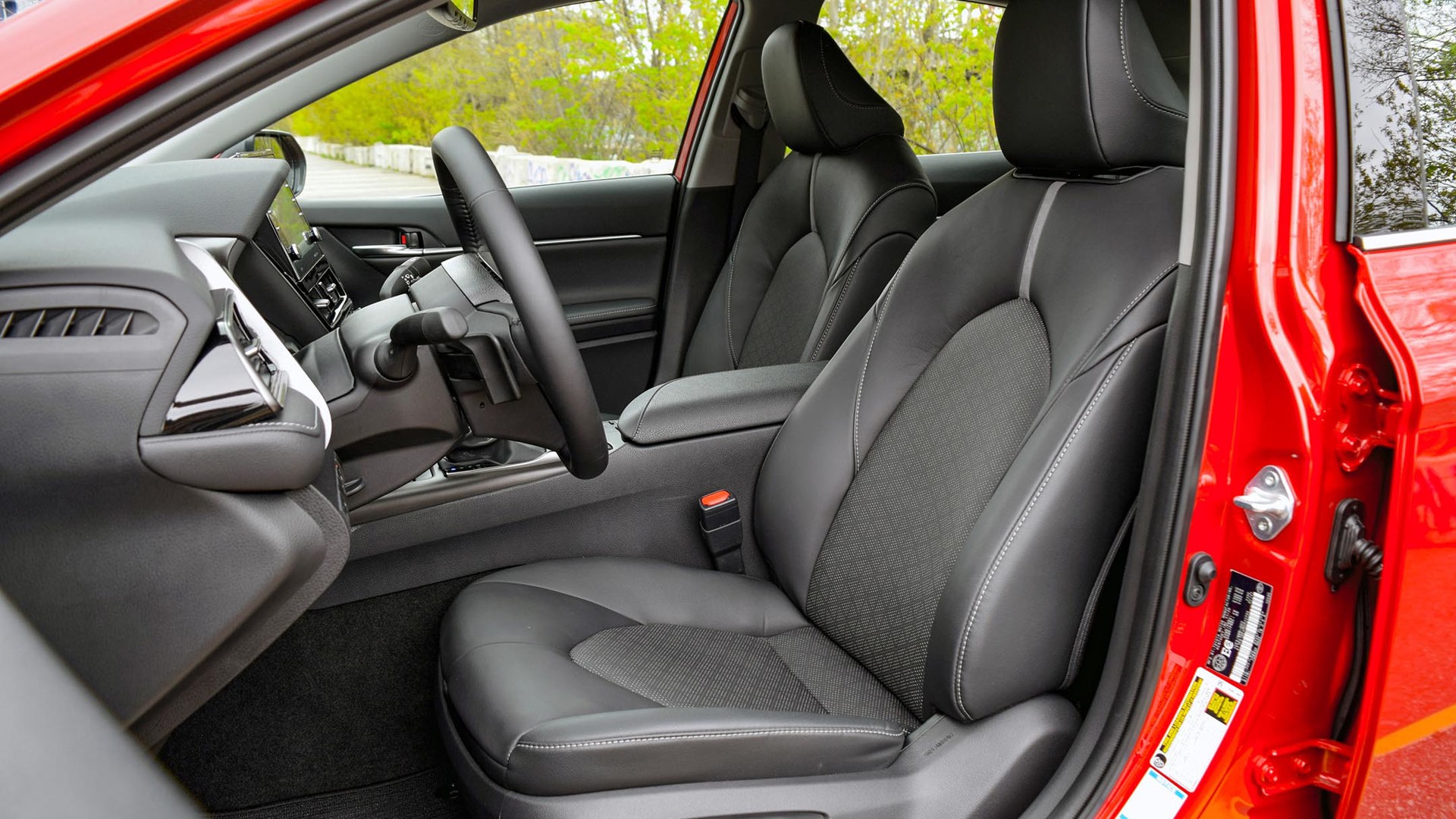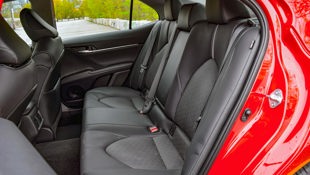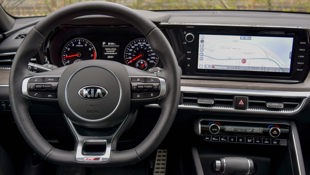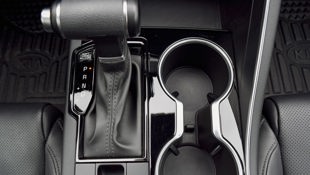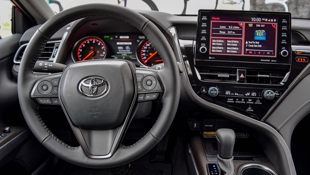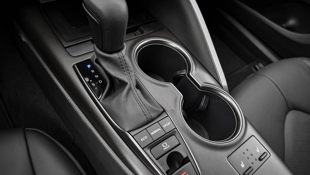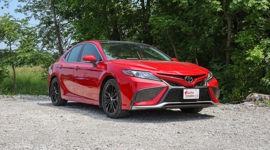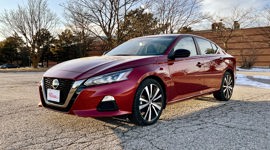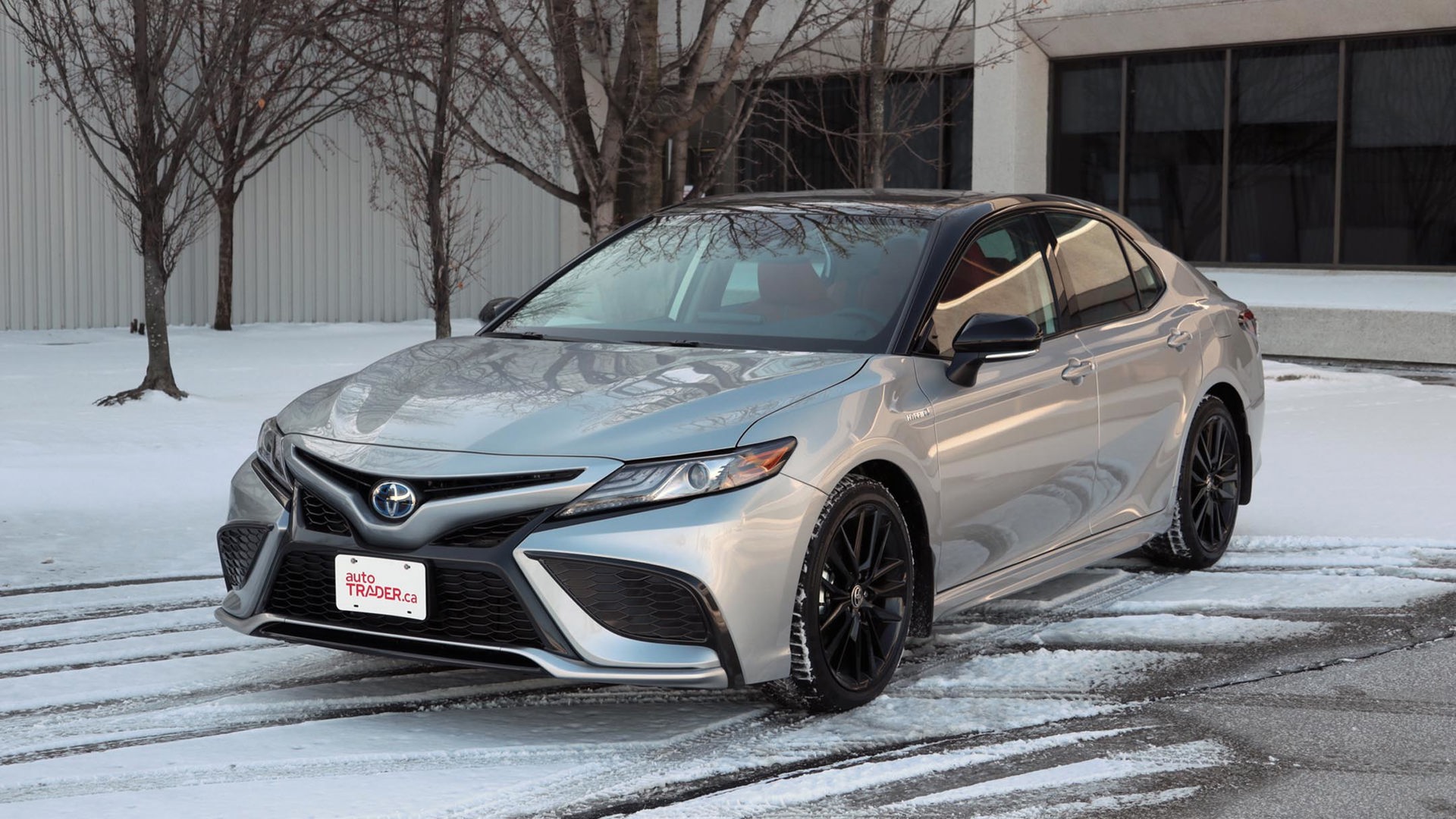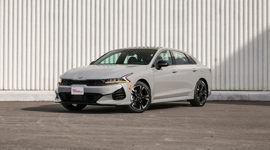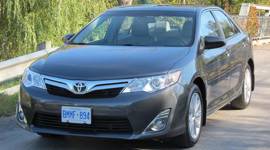Comparison Data
|
2021 Kia K5 GT-Line
|
2021 Toyota Camry XSE AWD
|
|---|---|
|
Engine Displacement
1.6L
|
2.5L
|
|
Engine Cylinders
I4
|
I4
|
|
Peak Horsepower
180 hp
|
205 hp
|
|
Peak Torque
195 lb-ft
|
185 lb-ft
|
|
Fuel Economy
9.2 / 6.9 / 8.2 L/100 km cty/hwy/cmb
|
9.5 / 7.0 / 8.4 L/100 km cty/hwy/cmb
|
|
Cargo Space
434 L
|
428 L
|
|
Base Price
$35,995
|
$37,190
|
|
A/C Tax
$100
|
$100
|
|
Destination Fee
$1,750
|
$1,790
|
|
Price as Tested
$38,095
|
$39,335
|
|
Optional Equipment
$250 – Paint, $250
|
$255 – Paint, $255
|
Not everyone has been seduced by the crossover craze, and some exciting stuff is still happening in the midsize space for those sticking with sedans.
Well, it’s tough to describe the 2021 Toyota Camry as “exciting,” but at least it’s available with all-wheel drive now. It’s also one of the most popular cars of its kind, meaning this aggressive-looking Toyota is still the stick by which all new entries are measured.
The 2021 Kia K5 is one such entry, replacing the Optima in the automaker’s ever-evolving lineup. And just like the Camry, it even offers all-wheel drive.
Styling
With sharp angles, contrasting black accents, and big 19-inch wheels, the Toyota Camry is definitely expressive – especially in this XSE trim. All-wheel drive is offered in LE, XLE, SE, and XSE guise, with the latter two models looking more aggressive through the addition of a unique fascia and a subtle rear spoiler. Done up in this Supersonic Red, the Camry is certainly eye-catching.
Sadly, the same isn’t true of the interior. While the space could’ve been spiced up with different colours, shapes, and textures, it’s filled with understated black and grey surfaces instead. Gloss plastic trim pieces only add to the sense that Toyota focused more on the exterior than it did on the interior.
The Kia K5 is a fresh design, and is far less sterile-looking than the Optima it replaces. The side profile brings to mind the sporty Kia Stinger, and while it doesn’t boast the same eye-catching cues as the Camry’s 19-inch wheels, it does feature an elegant LED light signature. This GT-Line model spruces up the exterior in a few ways, with a different grille, blacked-out bumper garnish, and a rear spoiler.
The K5’s cabin is well designed, with plenty of practical touches. Material choice is upscale, with the faux wood trim on the dash being the only questionable design choice. Other unique details like the shifter stand out, mimicking the brand-defining Stinger.
Toyota Camry: 7/10; Kia K5: 8.5/10
Safety
Both sedans offer full suites of safety equipment and driving aids. That means blind-spot monitoring, forward collision warning with pedestrian and cyclist detection, lane-keeping assist, and full-speed adaptive cruise control. The Insurance Institute for Highway Safety (IIHS) has awarded both with a Top Safety Pick+ rating – the highest honour given out by the institute. However, Kia packs a few extras into the K5, including a highway driving assist feature, parking sensors, rear occupant alert, safe exit warning and a forward-collision warning system that can warn drivers of oncoming traffic in an intersection.
Toyota Camry: 8.5/10; Kia K5: 9/10
Features
Both of these cars are generously equipped, but one has significantly more features than the other. While the Camry has heated seats, a heated steering wheel, dual-zone climate control, and a wireless phone charger, as well as Android Auto and Apple CarPlay support, this tester didn’t have an integrated navigation system, which is only included in the XLE model along with an upgraded audio system with additional speakers.
It’s an impressive list of features, but the Kia K5 goes well beyond, including many of the same features like heated seats, a heated steering wheel, dual-zone climate control, and Android Auto and Apple CarPlay support, while adding heated rear seats, ventilated front seats, and even a larger 10.25-inch touchscreen infotainment system.
Toyota Camry: 7.5/10; Kia K5: 9/10
User Friendliness
For the most part, the Camry is easy to use, with lots of buttons ensuring an analogue feel around the cabin. However, some of the buttons around the infotainment system are a bit small and labelled with tiny text. The infotainment system is also slow to respond to inputs, which can be frustrating.
The cabin of the Kia K5 is a bit more modern and easy to use, with a selection of easy-to-read and -use buttons and a smart wireless phone charging slot that holds the device in place. While the infotainment system is responsive, it’s a little irritating that there’s a home screen with just the time and date that you have to swipe away from to get to the menu of apps. Additionally, Android Auto and Apple CarPlay don’t take full advantage of the large screen, leaving some unused space.
Toyota Camry: 7/10; Kia K5: 7.5/10
Practicality
Sedans don’t have as much space as crossovers, and those looking to get more room for their money might be a bit disappointed with the accommodations these mid-sizers offers. Between the two, the Kia offers more space in the front seats, with more head- and legroom compared to the Toyota. But the rear-seat space falls in favour of the Camry, which has slightly more headroom and much more legroom. The K5 features a larger trunk, with 434 L of storage compared to the Camry’s 428 L.
Toyota Camry: 6.5/10; Kia K5: 6.5/10
Comfort
However, the Toyota can feel a bit claustrophobic from the driver’s seat, with a high shoulder line, while the infotainment screen is perched on the dashboard and the rearview mirror squeezes forward visibility. The seats are comfortable enough, though the ride is just okay. The XSE model has a sportier suspension setup, which combines with the larger wheels to feel firmer.
The K5 is a bit more comfortable, with softer seats and better support. Visibility is good, and the ride is softer than the Camry’s. However, the Kia is a bit loud, especially when accelerating, while the Toyota is a bit better in this regard.
Toyota Camry: 7/10; Kia K5: 7.5/10
Power
While both sedans have all-wheel drive, it’s clear that these drivetrains come with some compromises, and both can feel a bit lethargic on the road. The 2.5L four-cylinder engine under the hood of the Toyota Camry is paired with an eight-speed automatic transmission. With 205 hp and 185 lb-ft of torque, the motor has barely enough oomph to motivate the sedan in any sort of hurry. Encouraging a downshift for extra acceleration seems to take too much time, and the Camry feels a bit dull to drive as a result.
Even with a turbocharged 1.6L four-cylinder engine, the Kia K5 isn’t any better. It offers just 180 hp and 195 lb-ft of torque, and comes paired with a continuously variable transmission (CVT). The transmission allows for responsive performance off the line and when calling for a pass, but it does rev up the motor to an irritating pitch.
These four-cylinder versions of the K5 and Camry are unimpressive, but there are optional engines available: a V6 in the Toyota, and a 2.5L turbo four-cylinder in the Kia. Unfortunately, both of these motors are only available with front-wheel drive, limiting their overall appeal.
Toyota Camry: 6.5/10; Kia K5: 7/10
Driving Feel
Looking past the underwhelming motors, the two sedans are responsive on the road, with the Camry eking out a little more driving fun than the Kia. Its stiff chassis and sporty suspension pair well; and though it impacts the ride comfort a bit, it means the vehicle feels in control and capable of managing the driver’s commands. If only the powertrain could keep up.
The K5 is a bit less sporty, and better suited for less aggressive driving. Comfortably swallowing up plenty of kilometres of road, the Kia seems better suited as a road trip vehicle, and its driving aids help make any venture on the highway feel effortless.
Toyota Camry: 7/10; Kia K5: 7/10
Fuel Economy
The all-wheel-drive version of the Toyota Camry XSE tested is rated to return 9.5 L/100 km in city driving conditions, 7.0 on the highway, and 8.4 combined. (The same ratings apply to the XLE model, while the lesser SE and LE models return a combined 8.2 L/100 km.)
The Kia K5 AWD has a combined figure of 8.2 L/100 km, with ratings of 6.9 on the highway and 9.2 in the city. The Kia managed to maintain a slight edge over the Camry in real-world testing, likely due to the fuel-friendly CVT.
Toyota Camry: 7/10; Kia K5: 7.5/10
Value
Choosing an all-wheel-drive Camry is about an extra $1,800 over a front-wheel-drive version, meaning the most affordable AWD version of the vehicle is a $30,590 Camry LE. The sportier Camry SE is $31,050 and offers a blacked-out Nightshade appearance package for $5,200 and an equipment package that includes goodies like wireless phone charging, dual-zone climate control, and a sunroof for $2,800. The Camry XSE, meanwhile, costs $37,190, while the fully loaded XLE model costs an extra $1,460 with a total price of $38,650. Toyota charges $1,790 for freight and delivery, and this tester featured an asking price of $39,235.
All versions of the K5 come with all-wheel drive except for the sporty, more powerful GT model. The base K5 LX starts at $29,595, while the EX is an extra $3,000 at $32,595. The GT-Line model tested starts at $35,995, and the one tested featured a coat of optional paint for $250. Including the $1,750 delivery fee, the total price was $37,995.
Toyota Camry: 7/10; Kia K5: 8.5/10
The Verdict
While Toyota offers a sedan with more rear-seat space and a sportier ride, the rest of the Camry doesn’t keep up with the competition. Both cars are disappointing in terms of power, though, so if you need extra performance you’ll have to trade off that all-wheel-drive confidence. Either way, as the more affordable and better equipped option, it’s hard not to suggest the 2021 Kia K5 at this price point.
